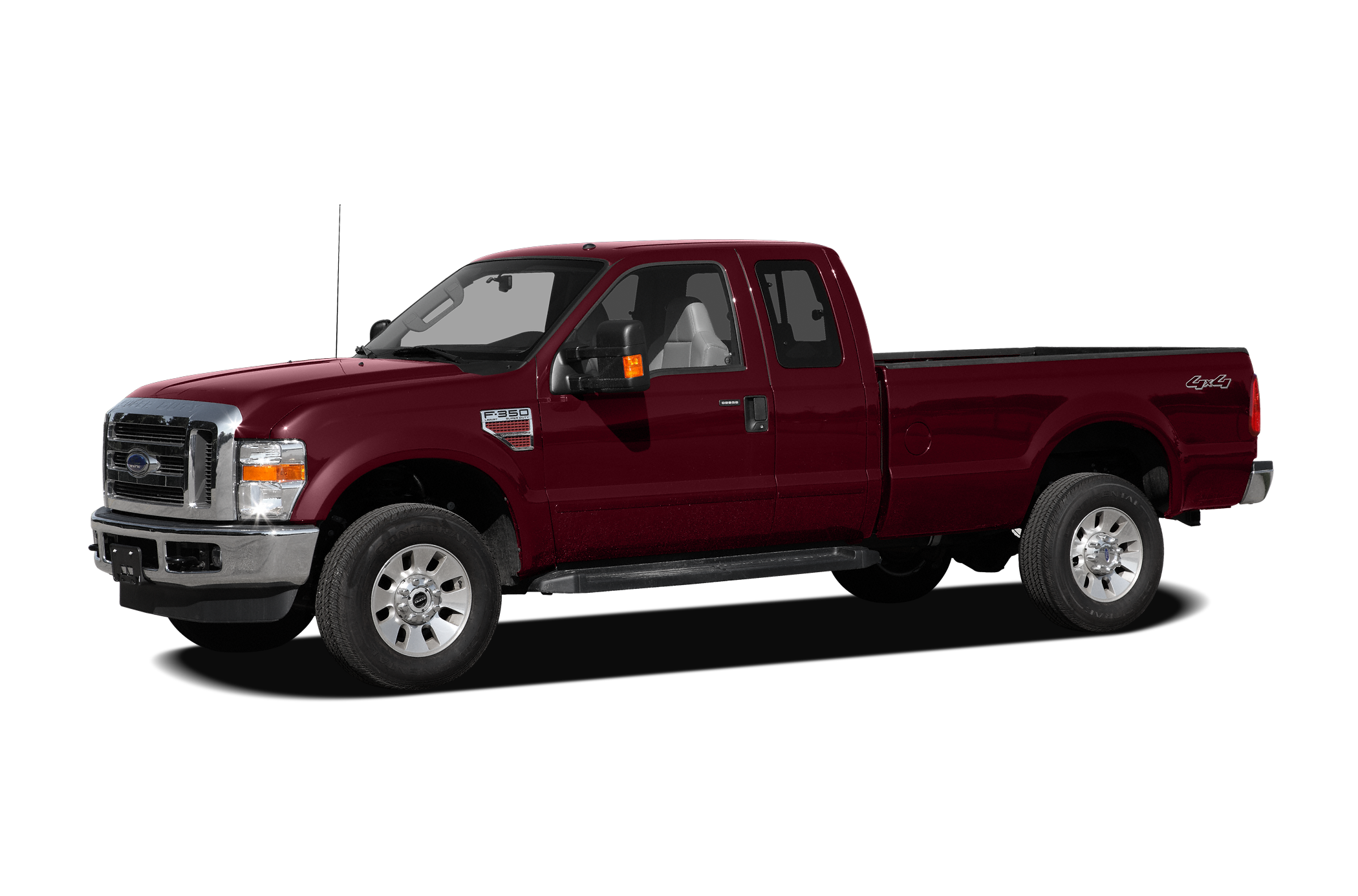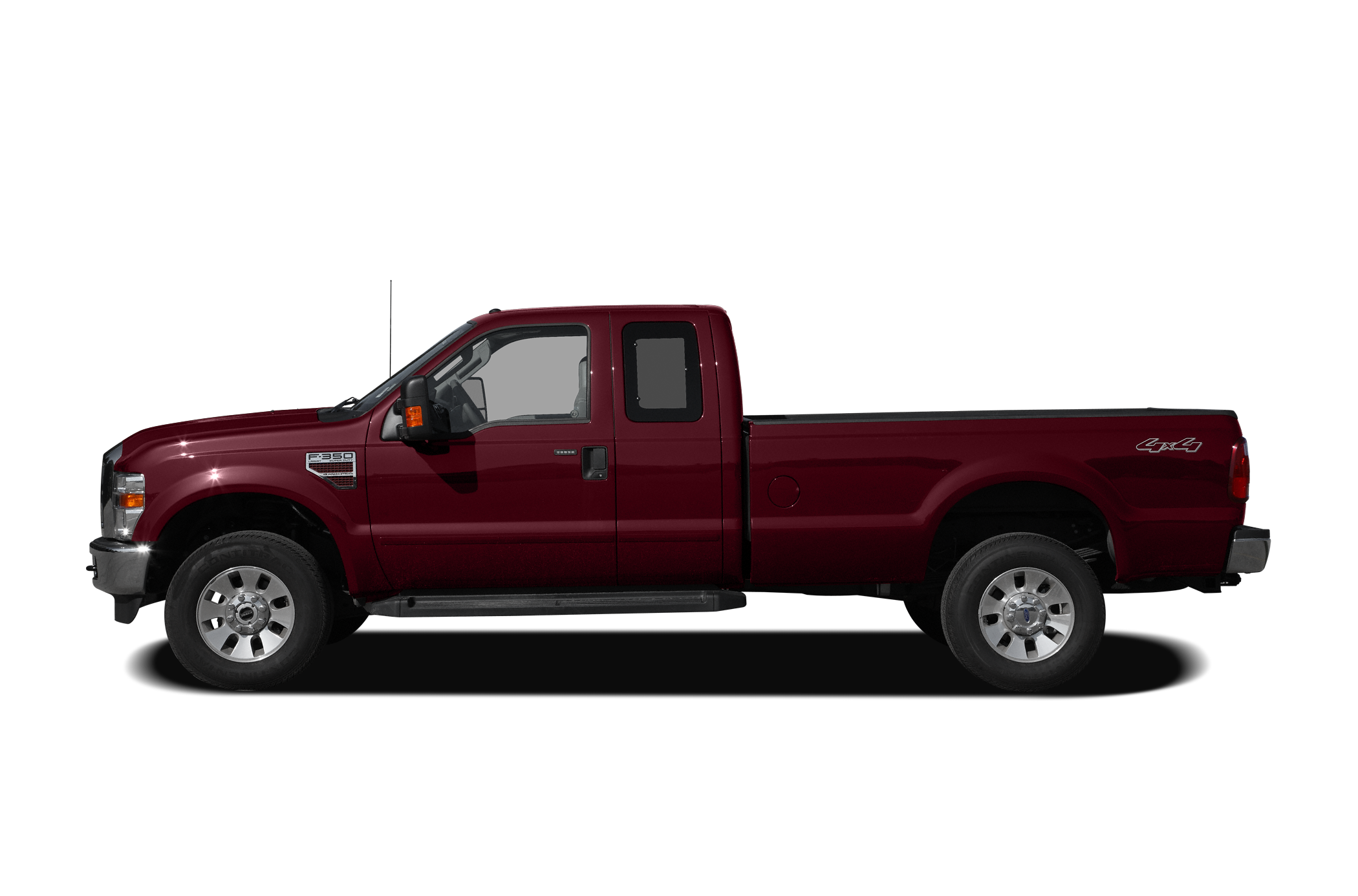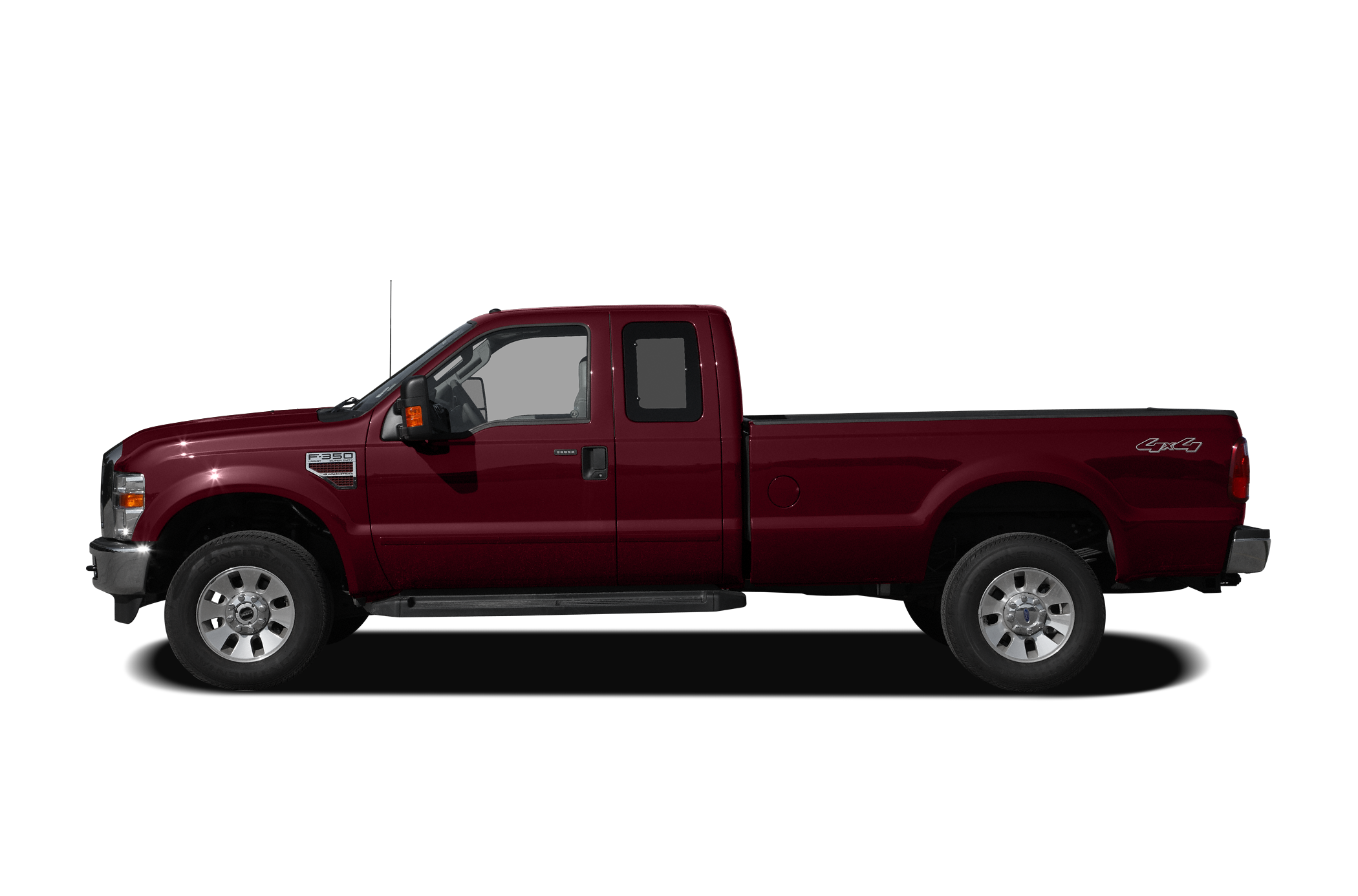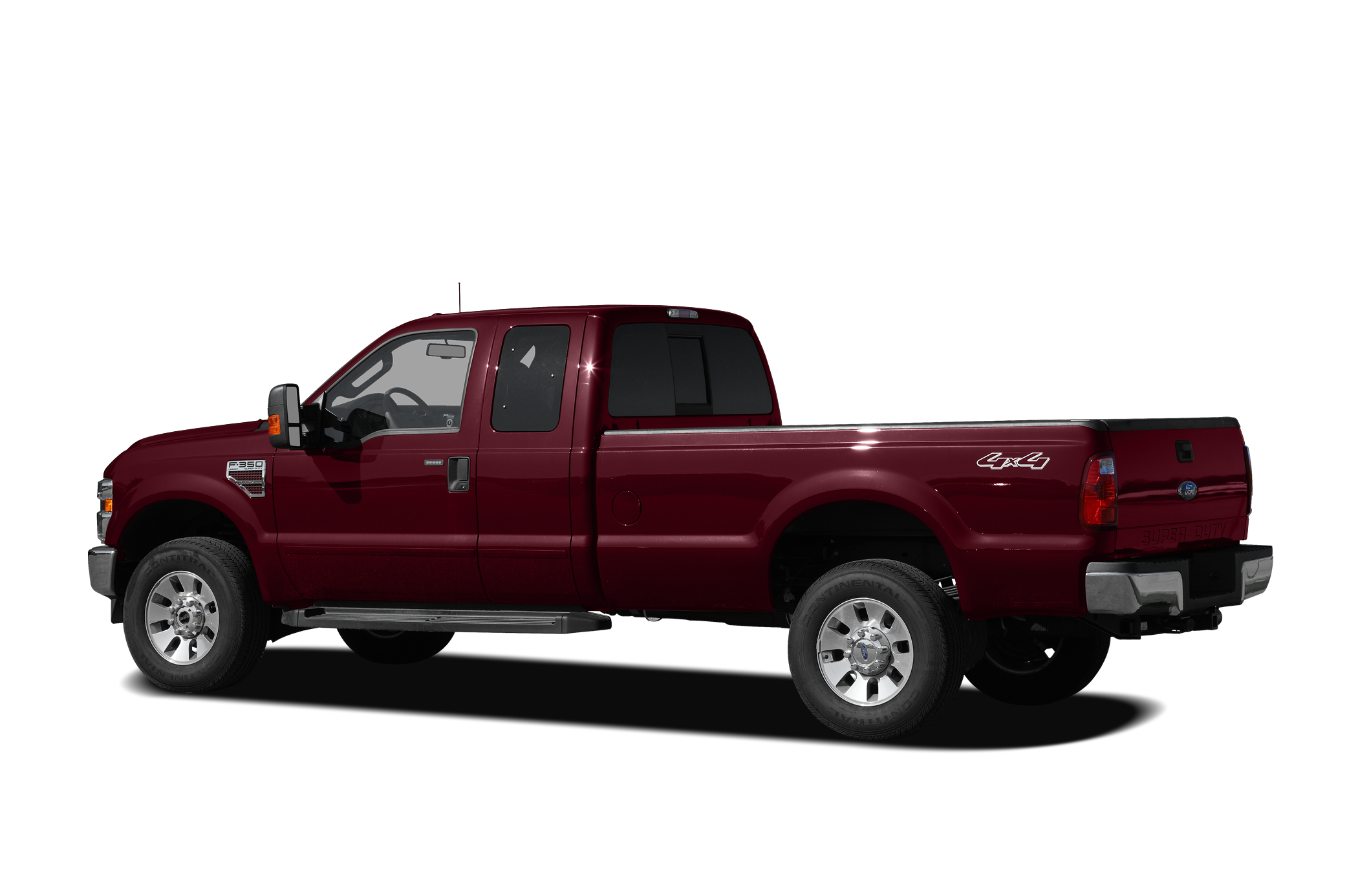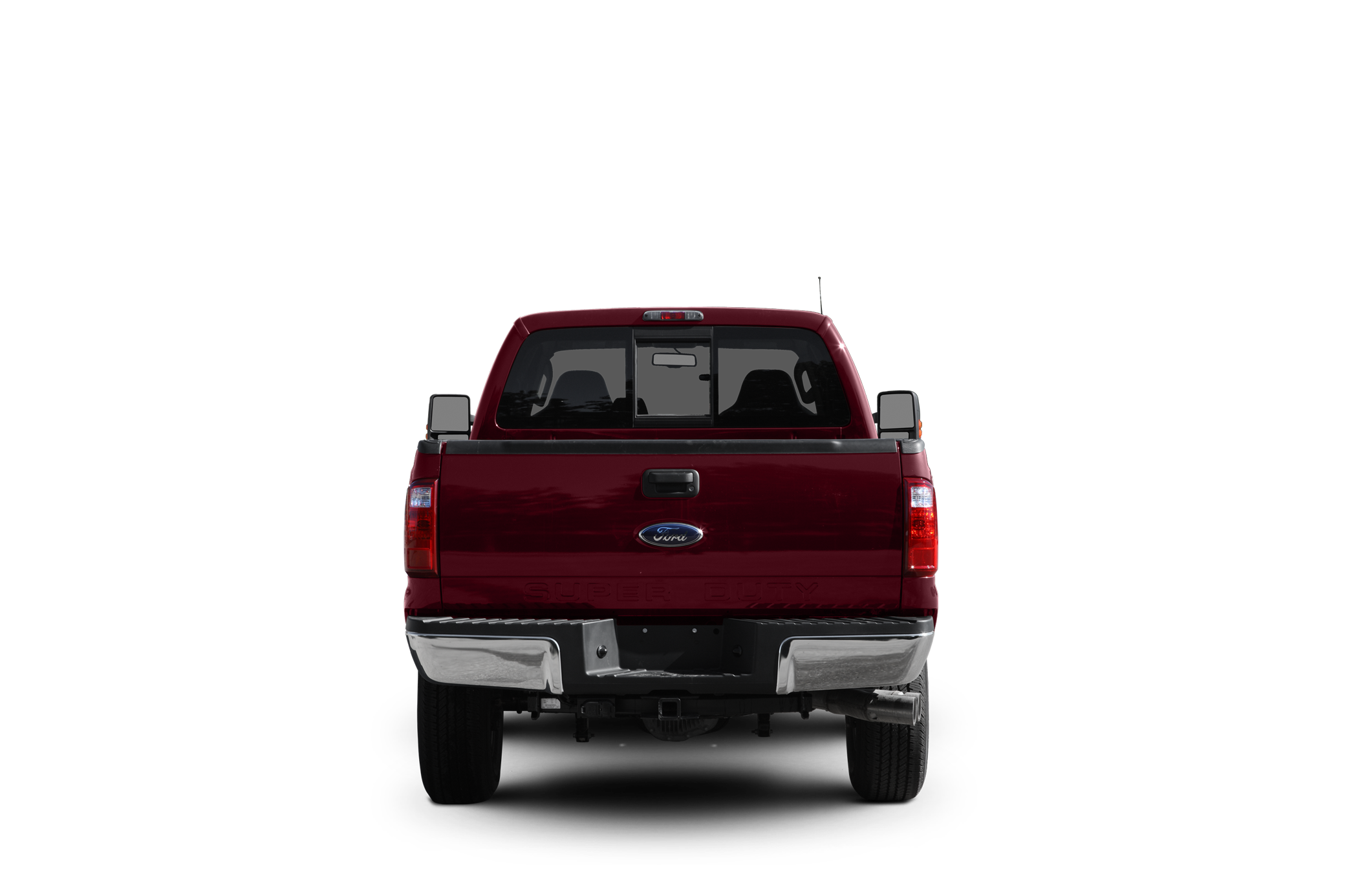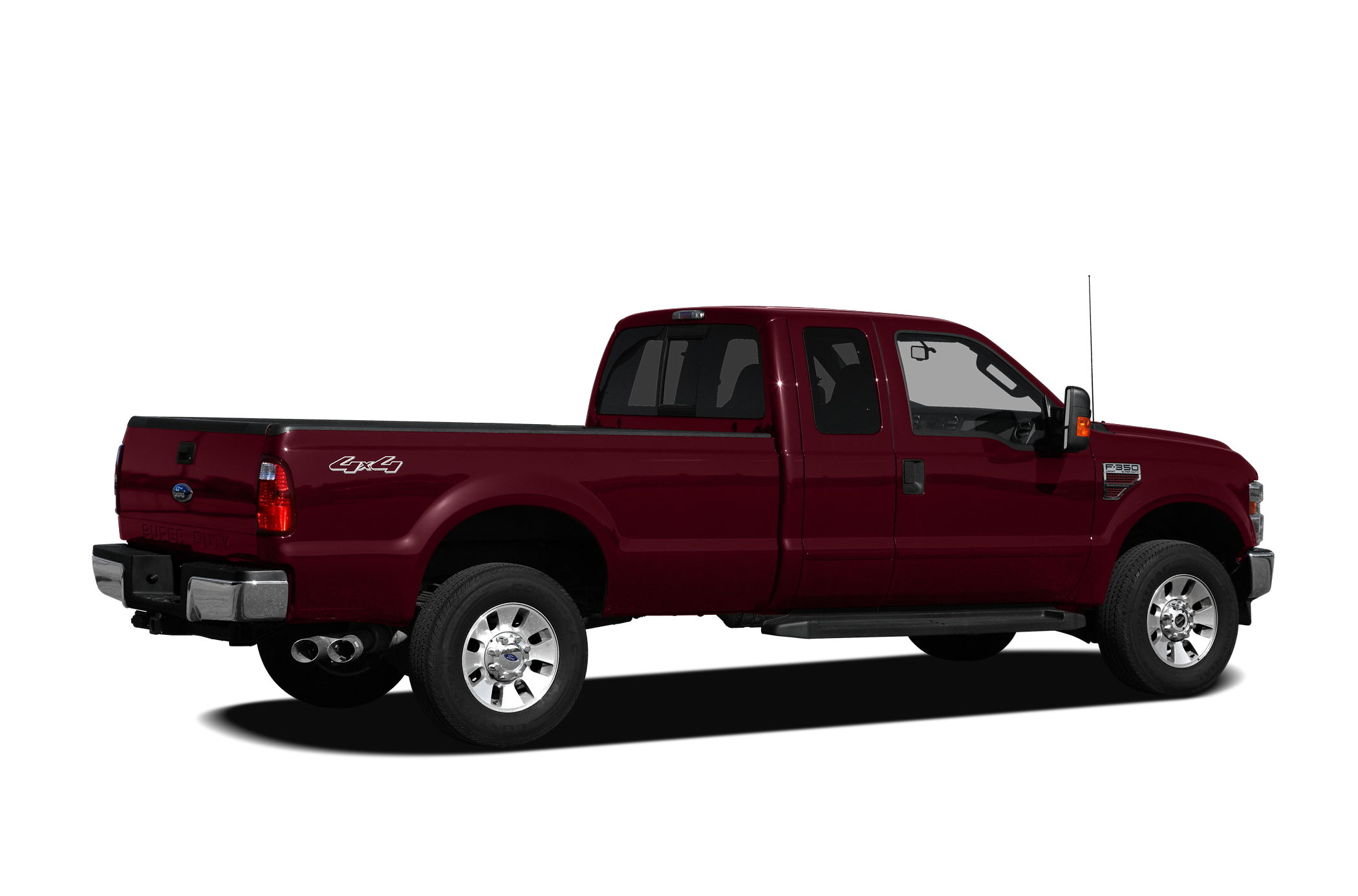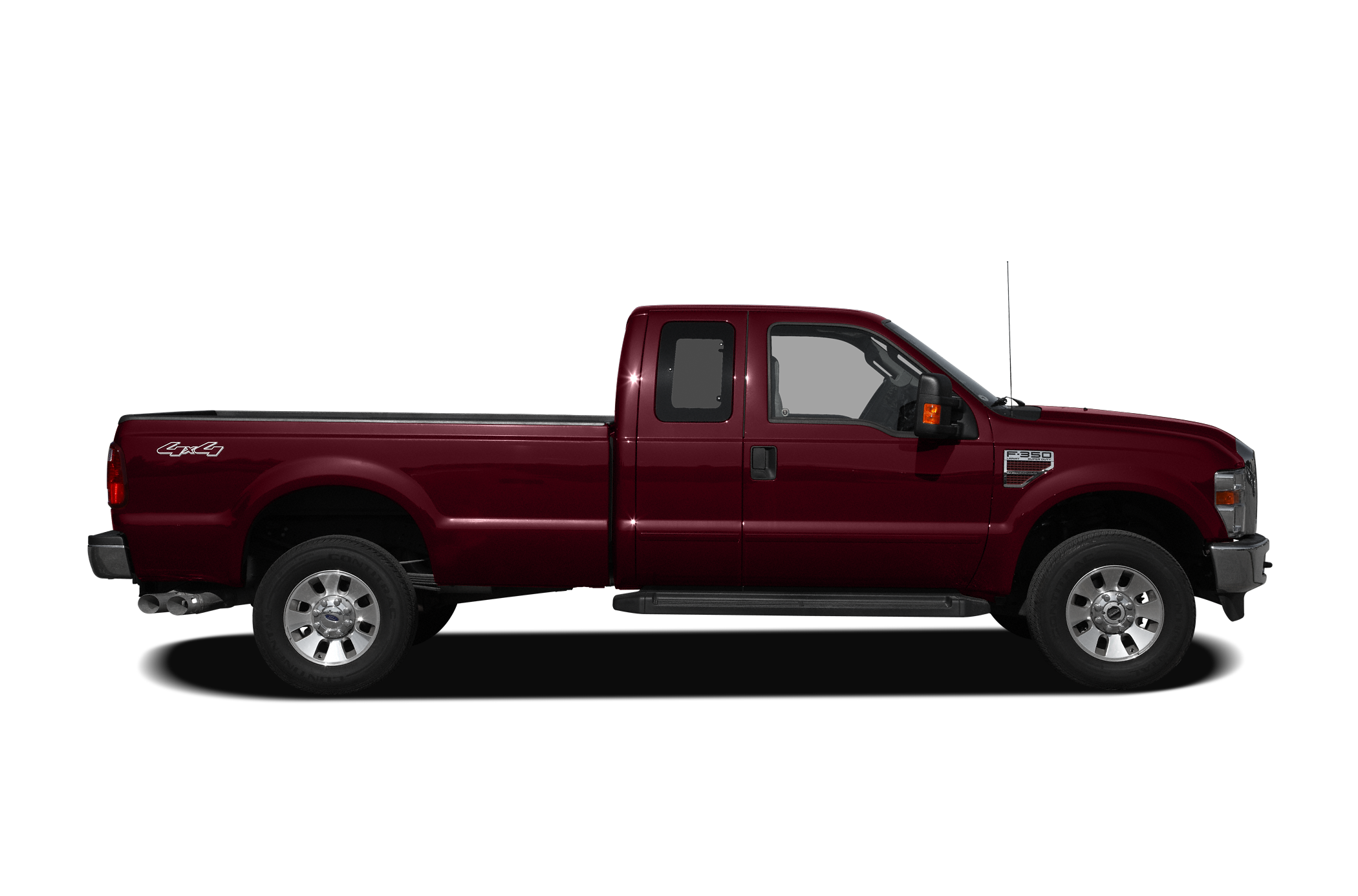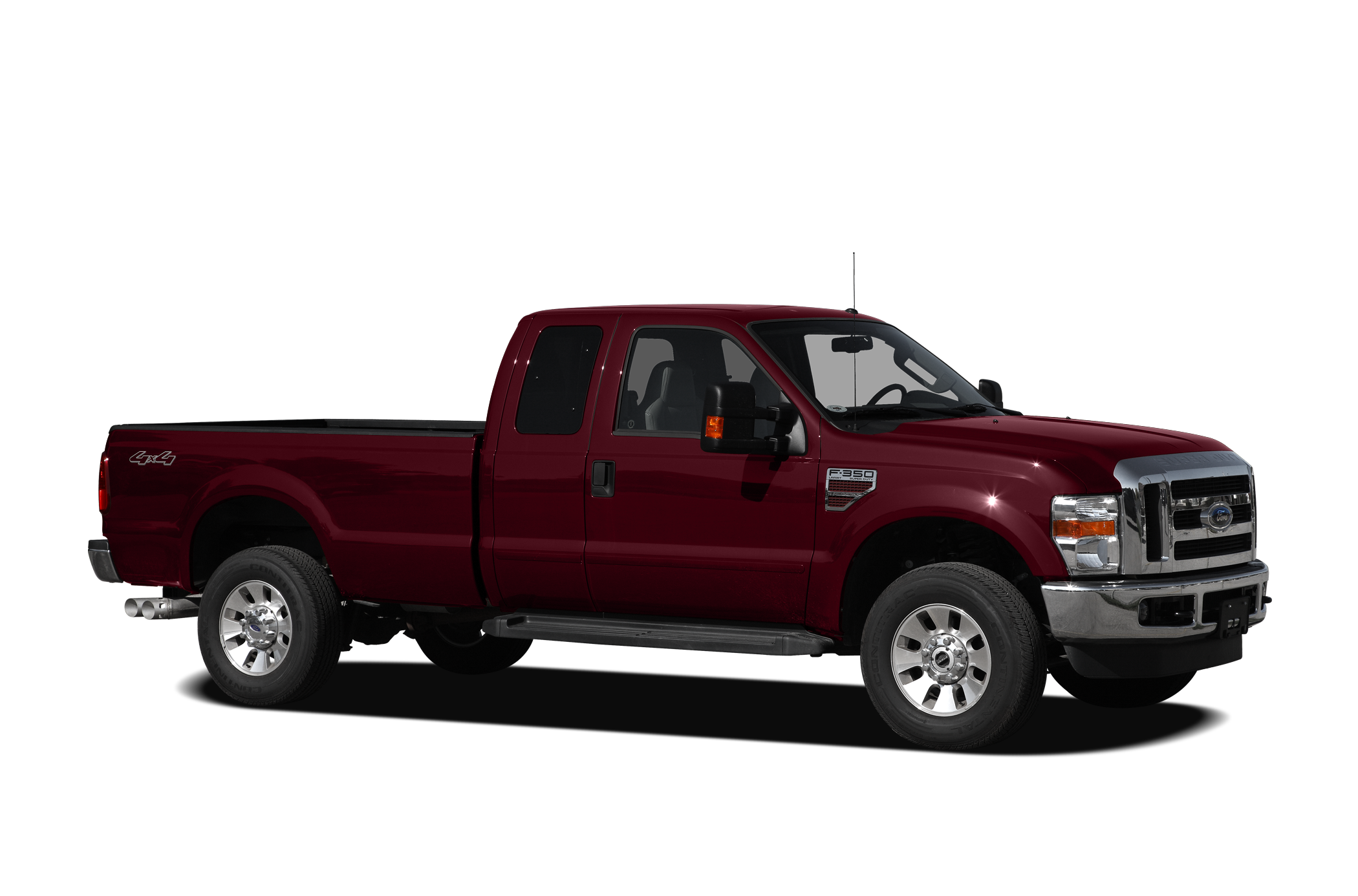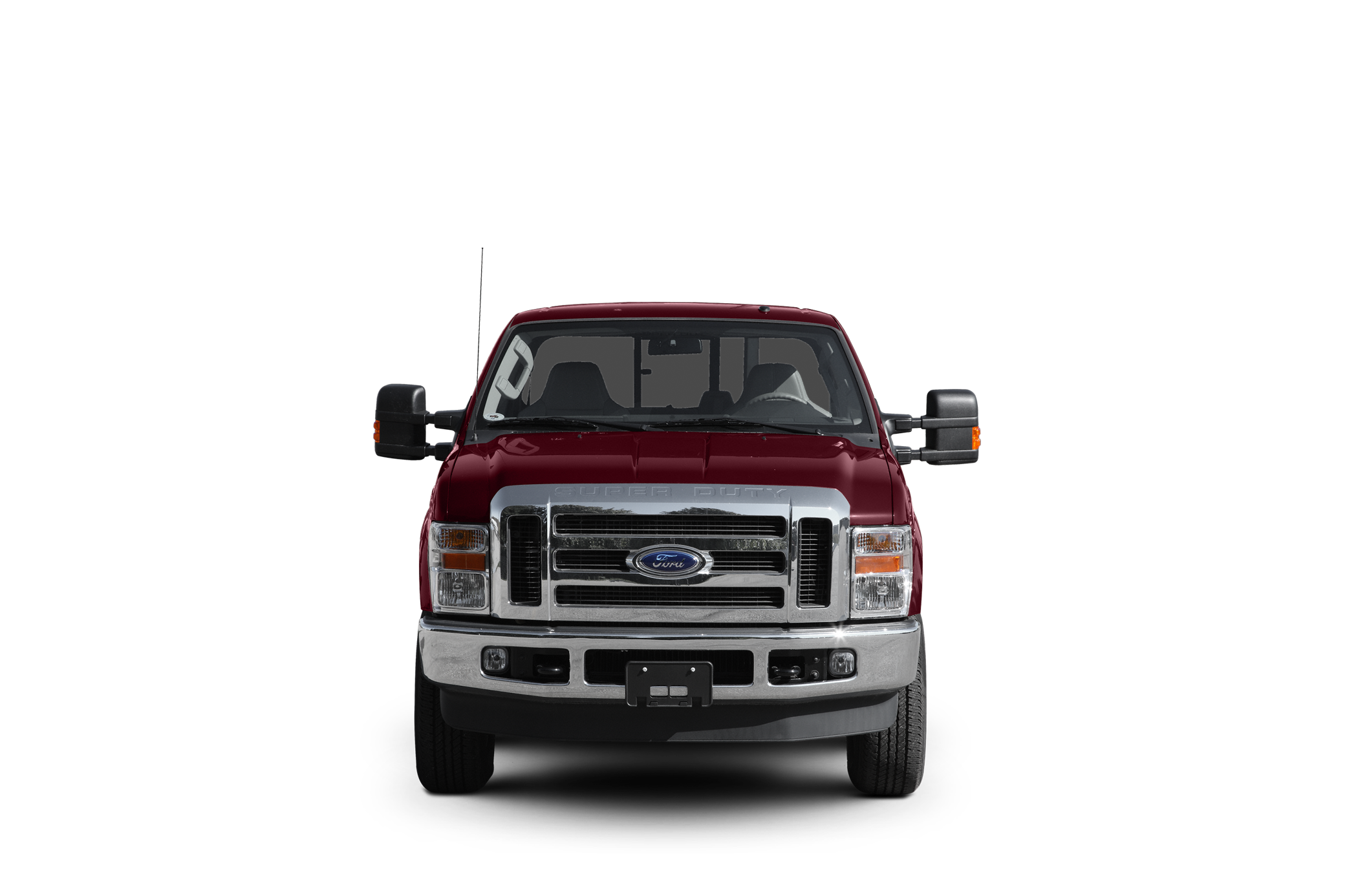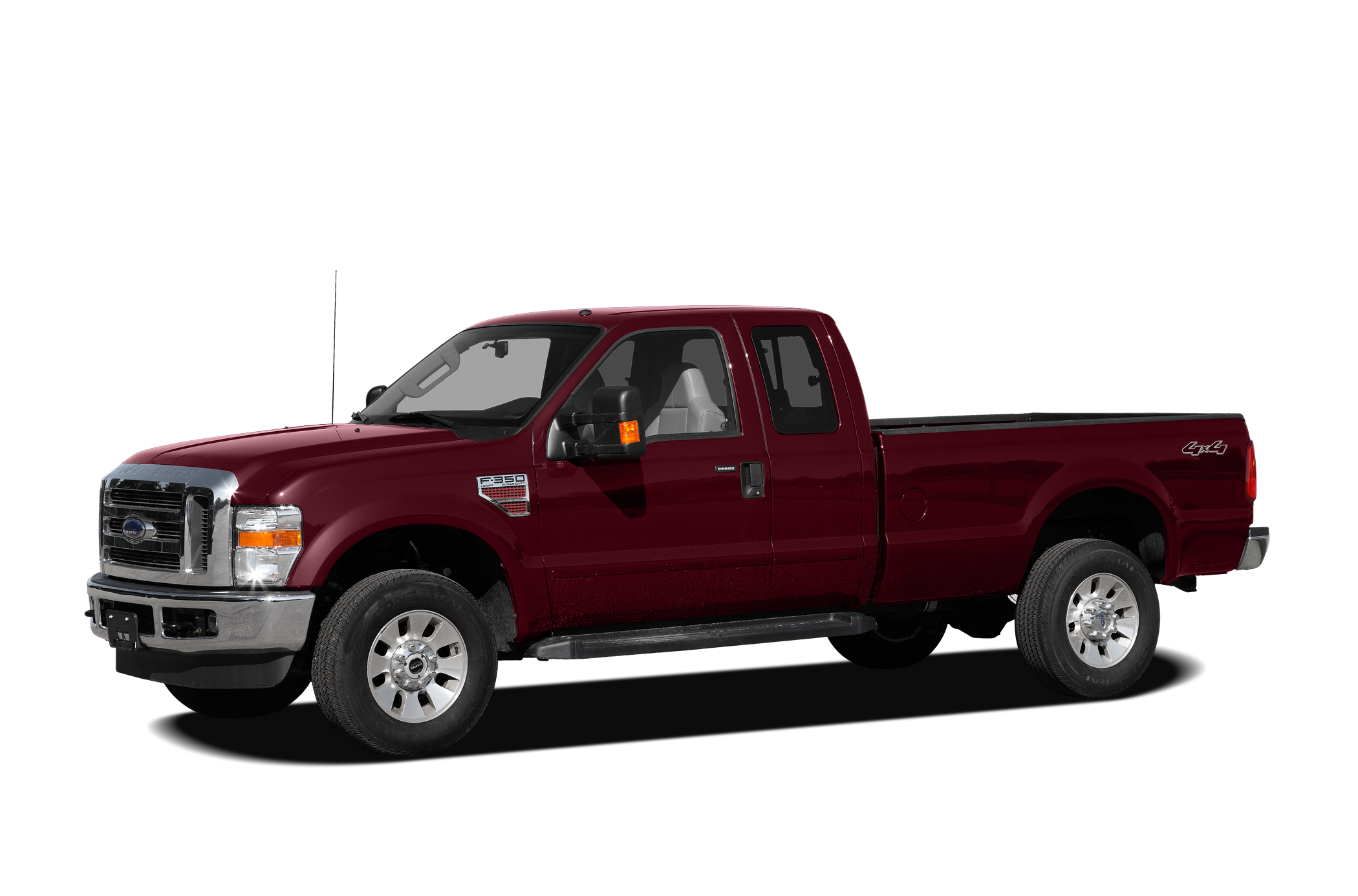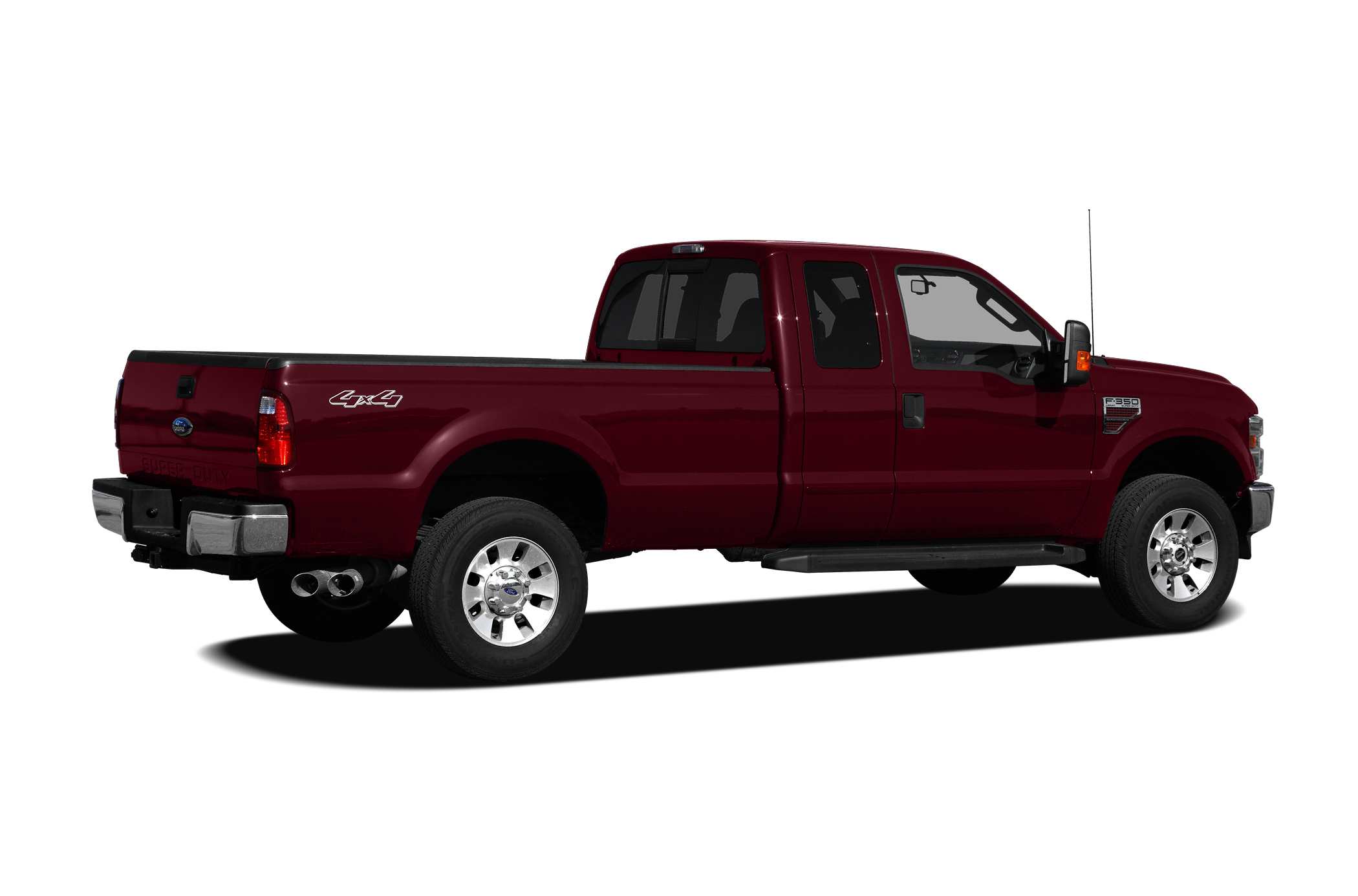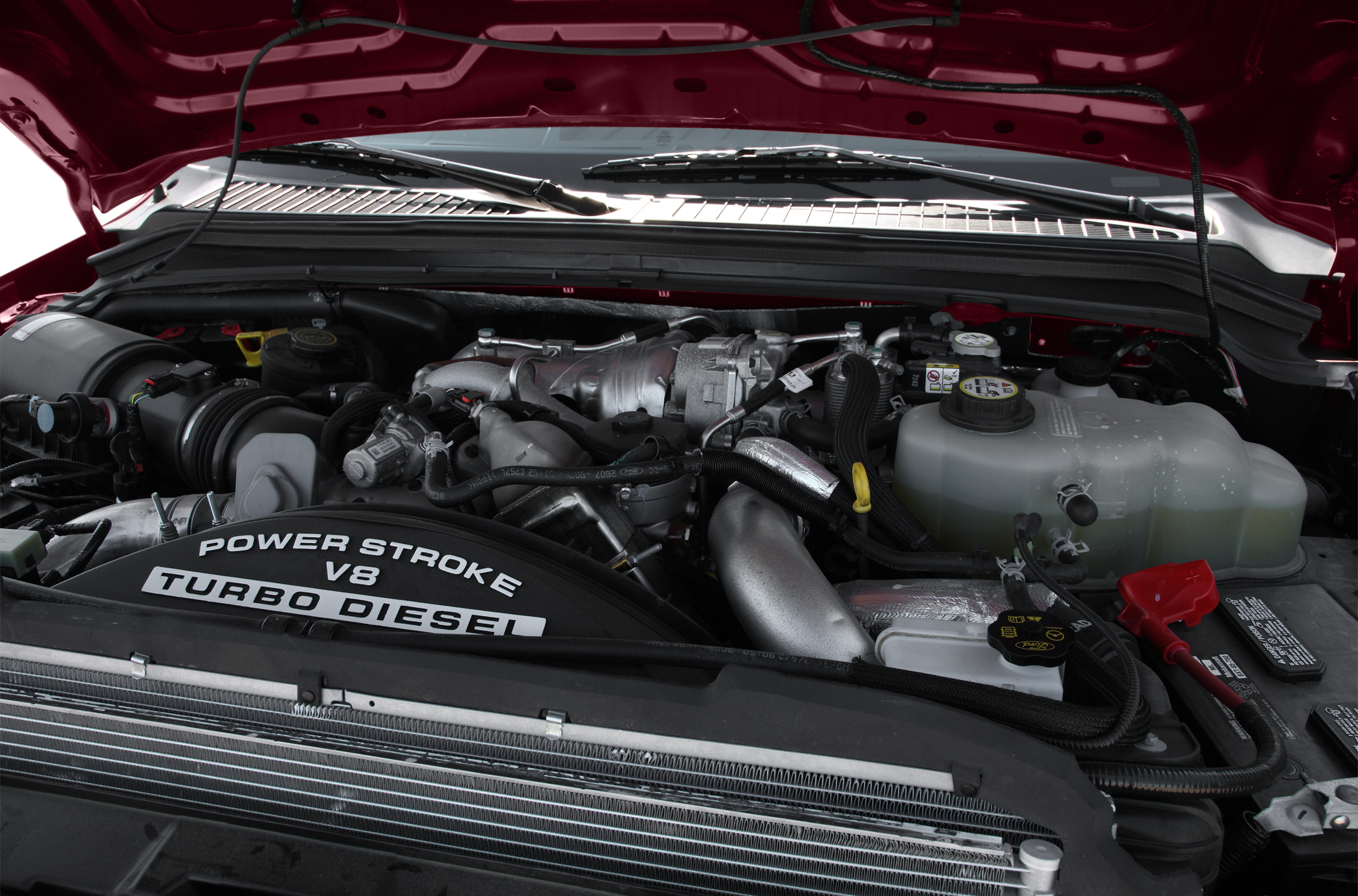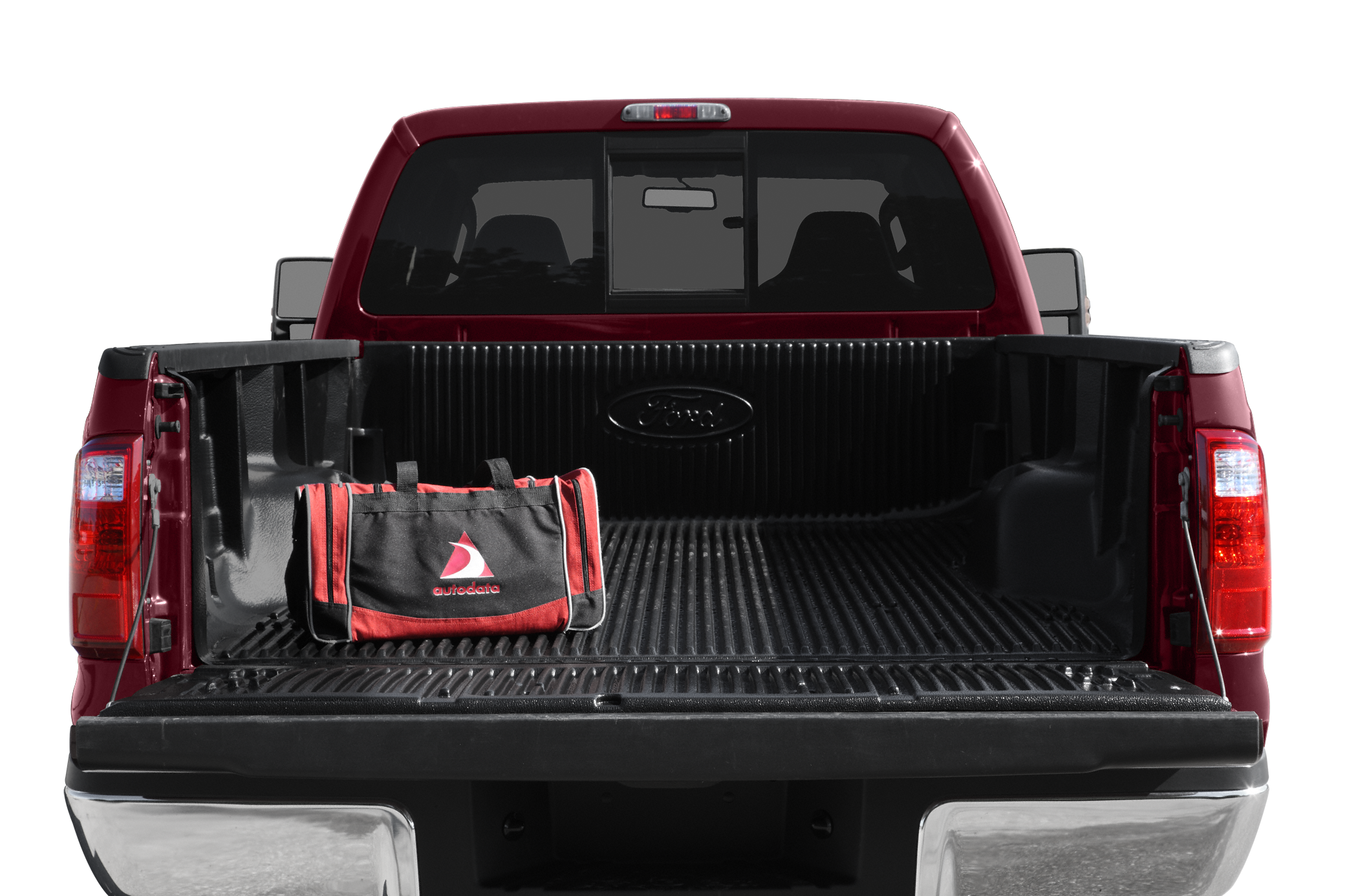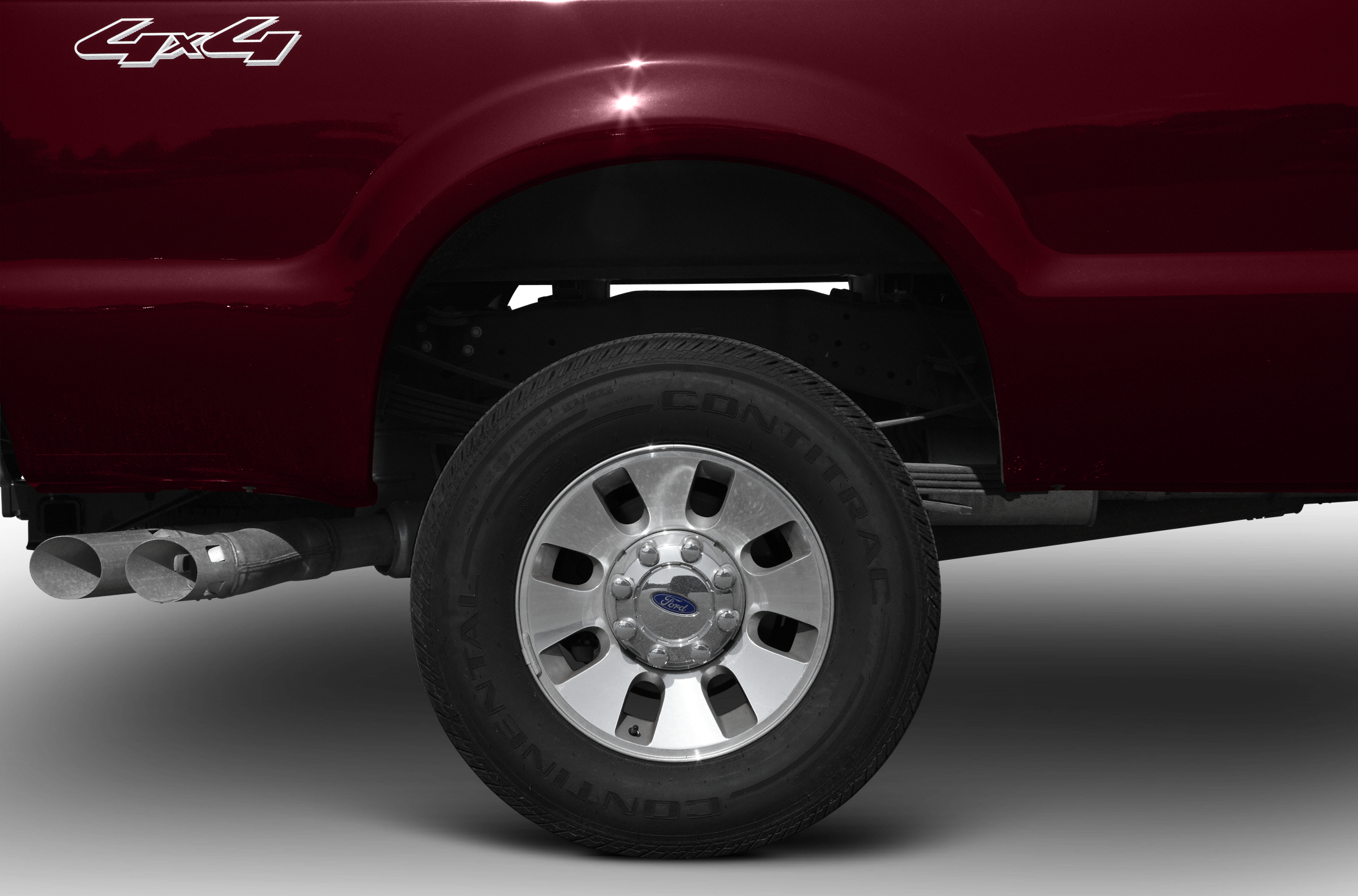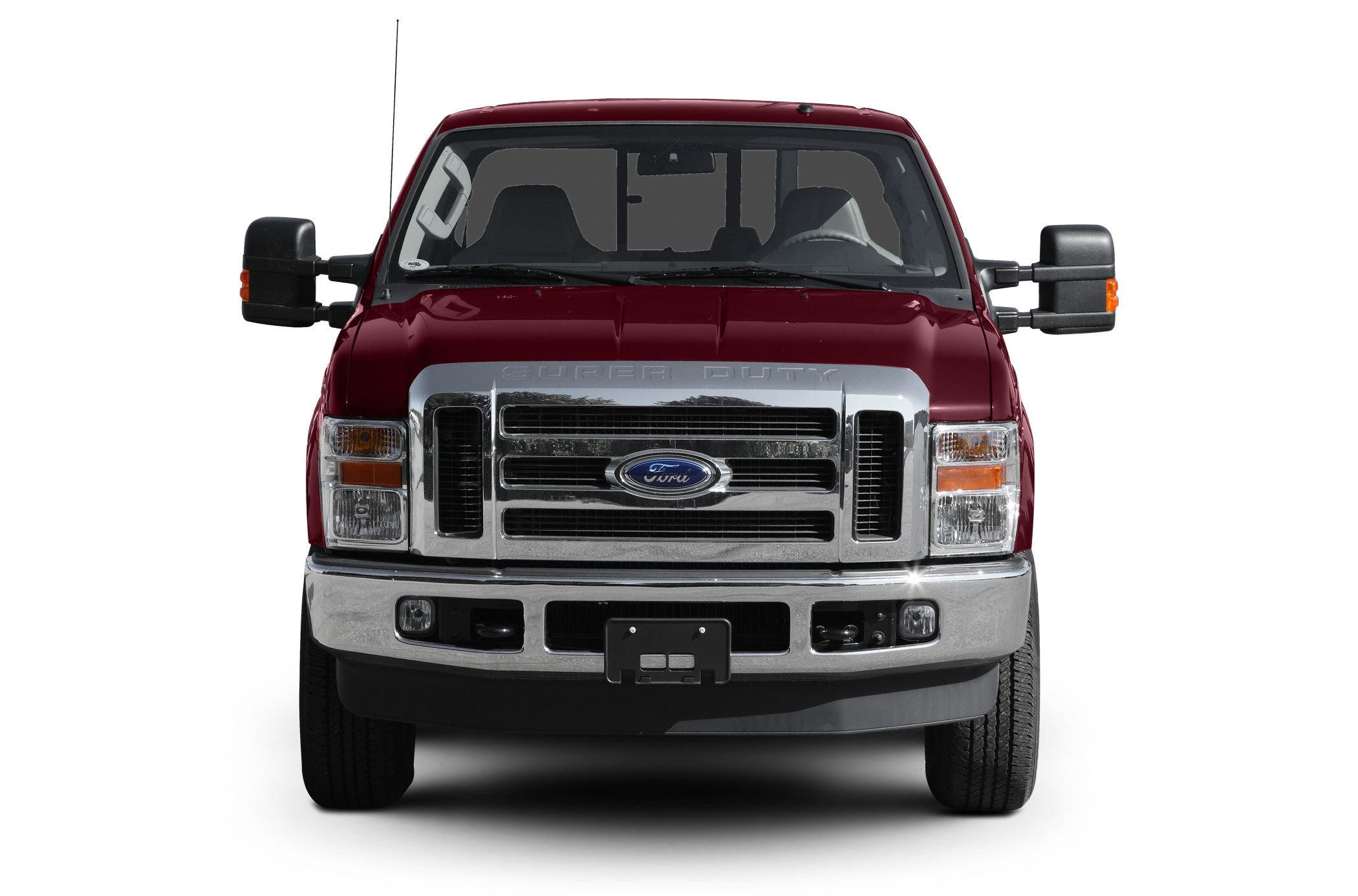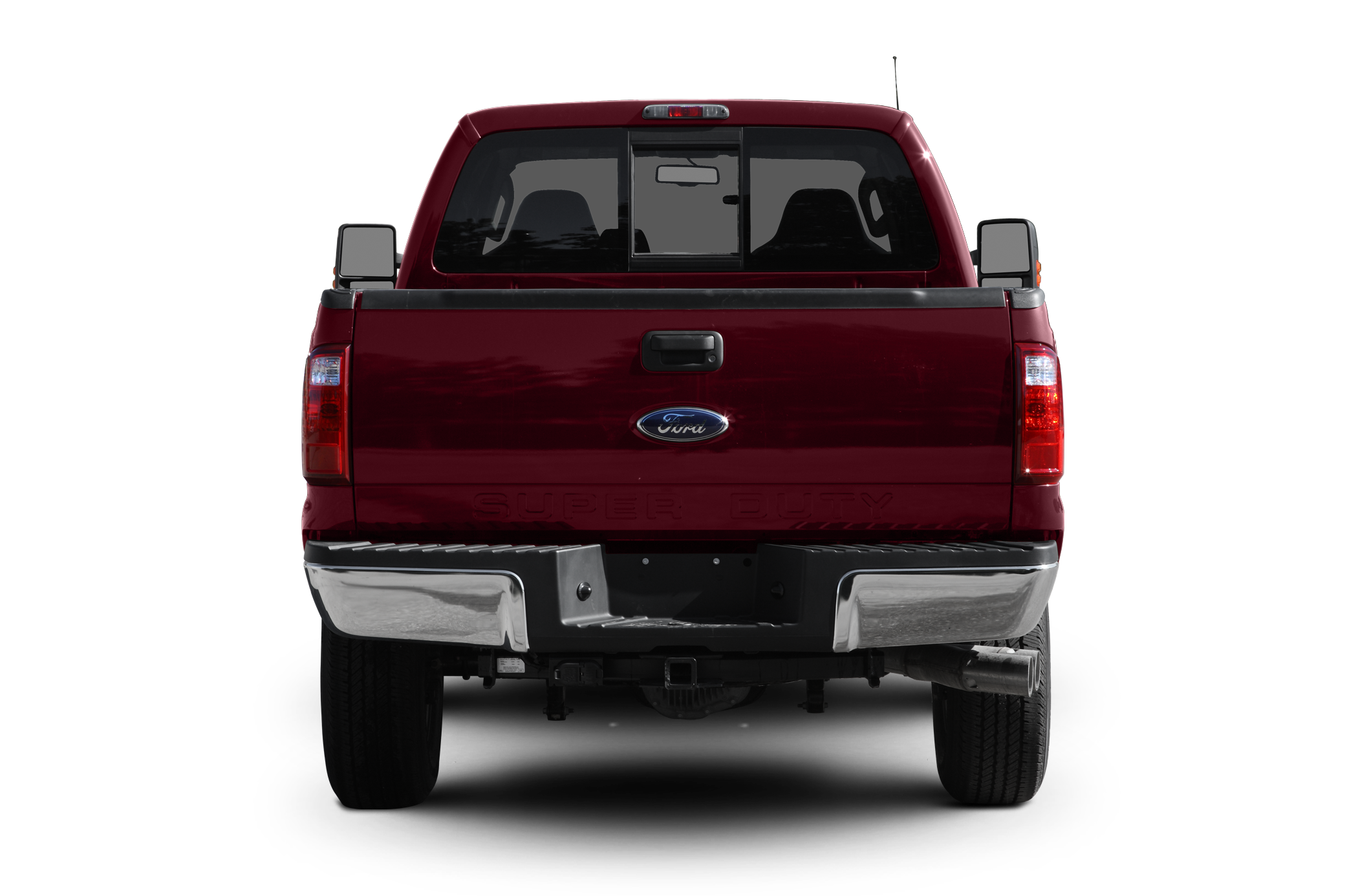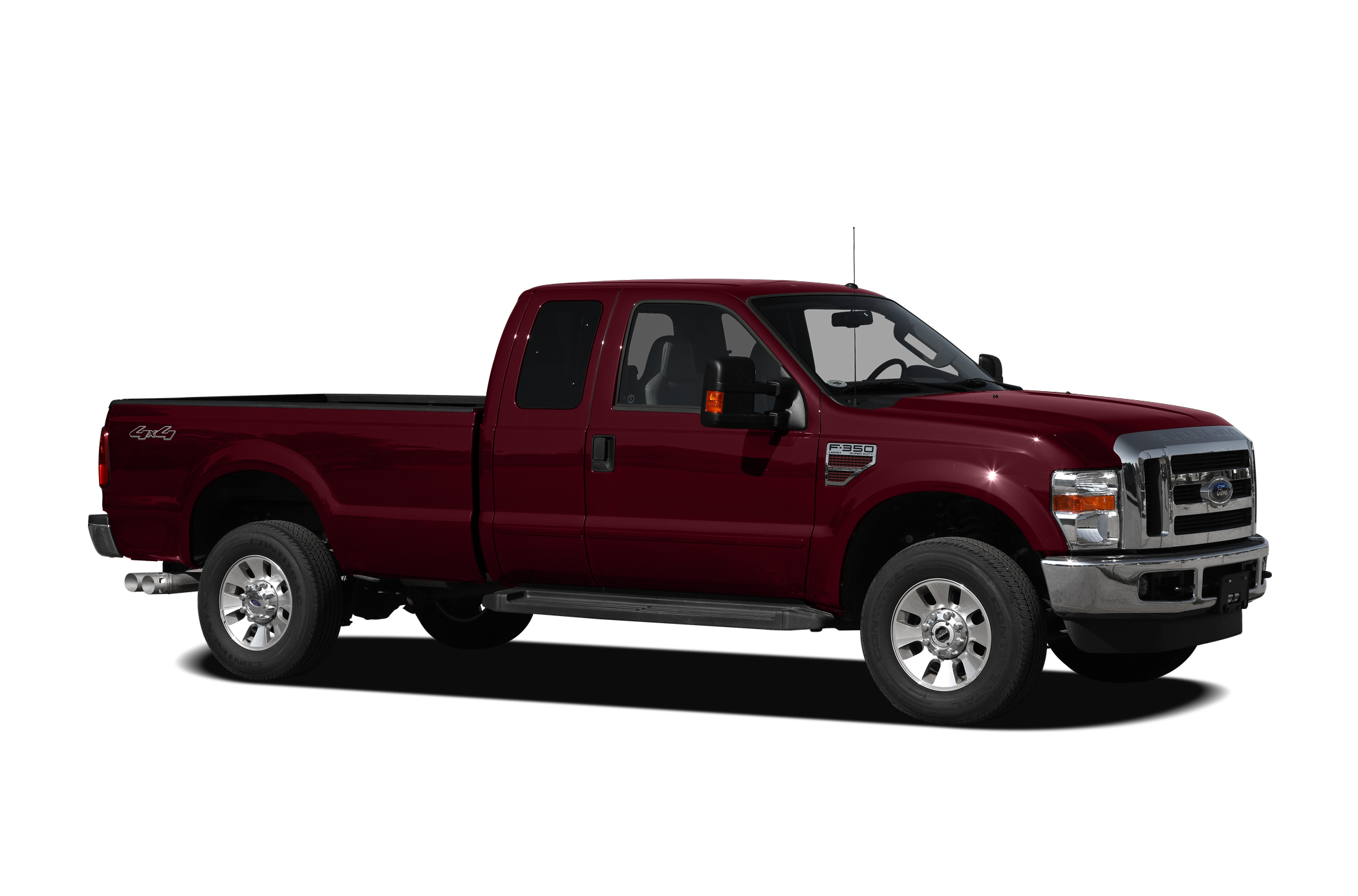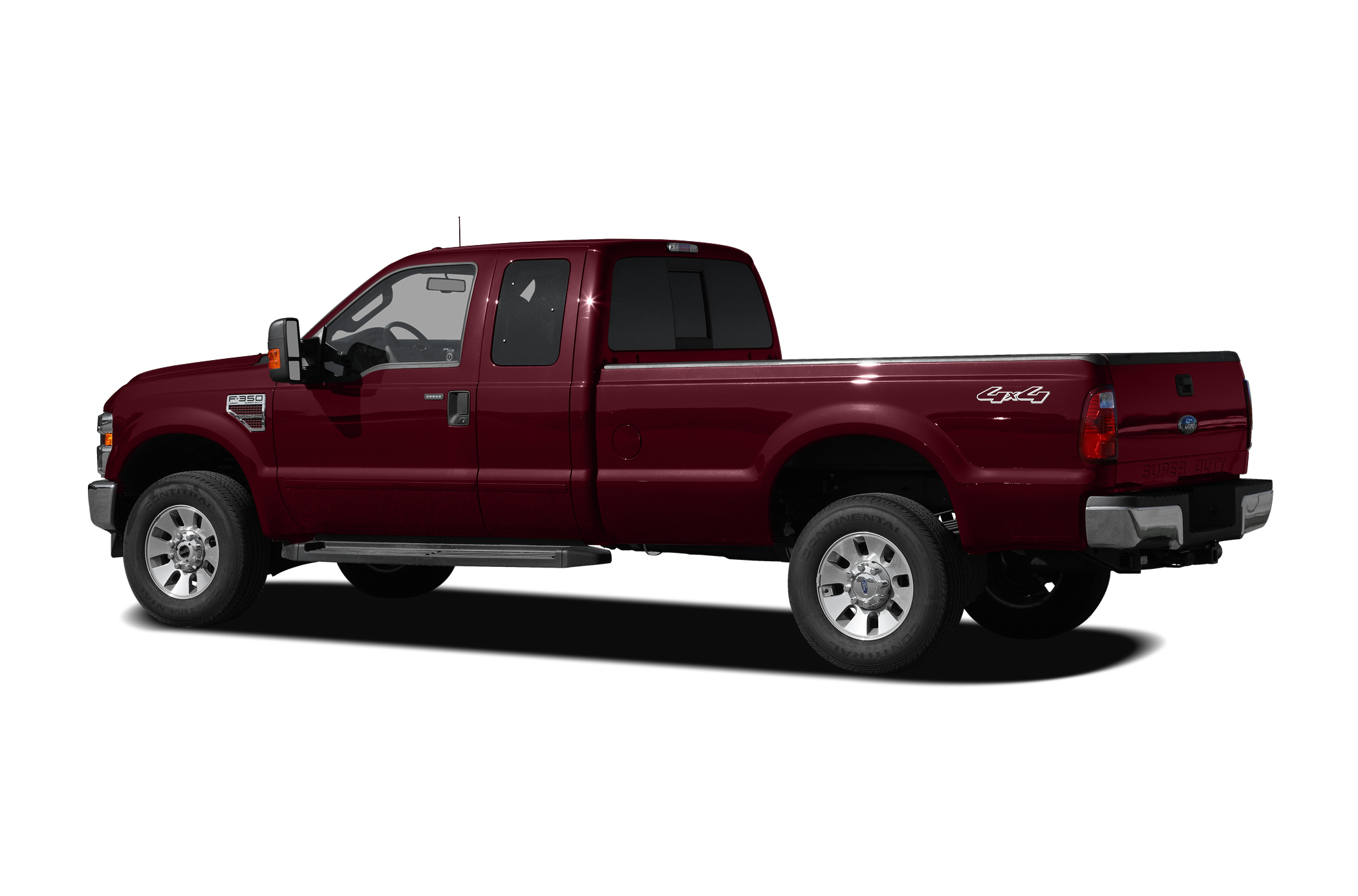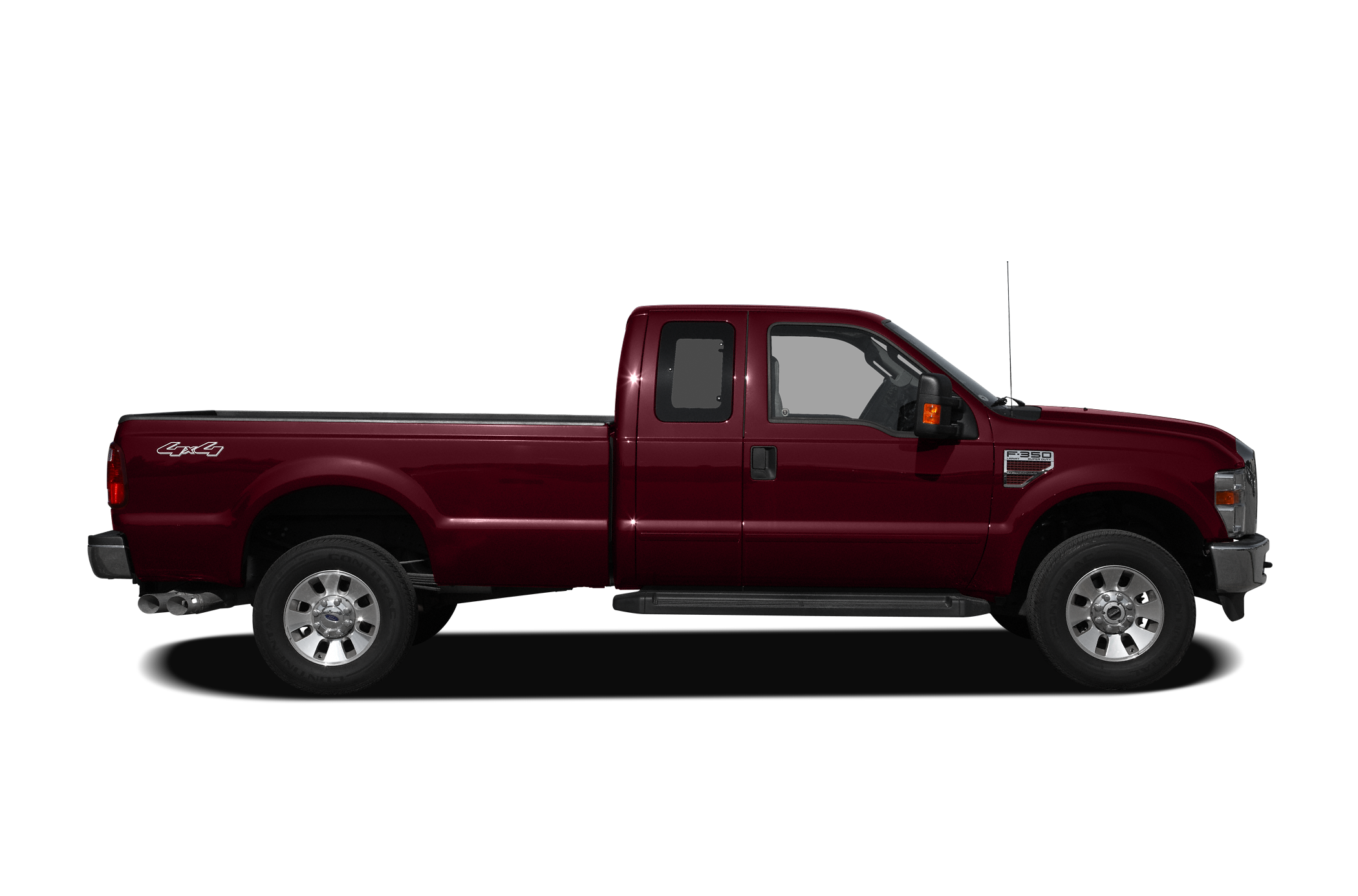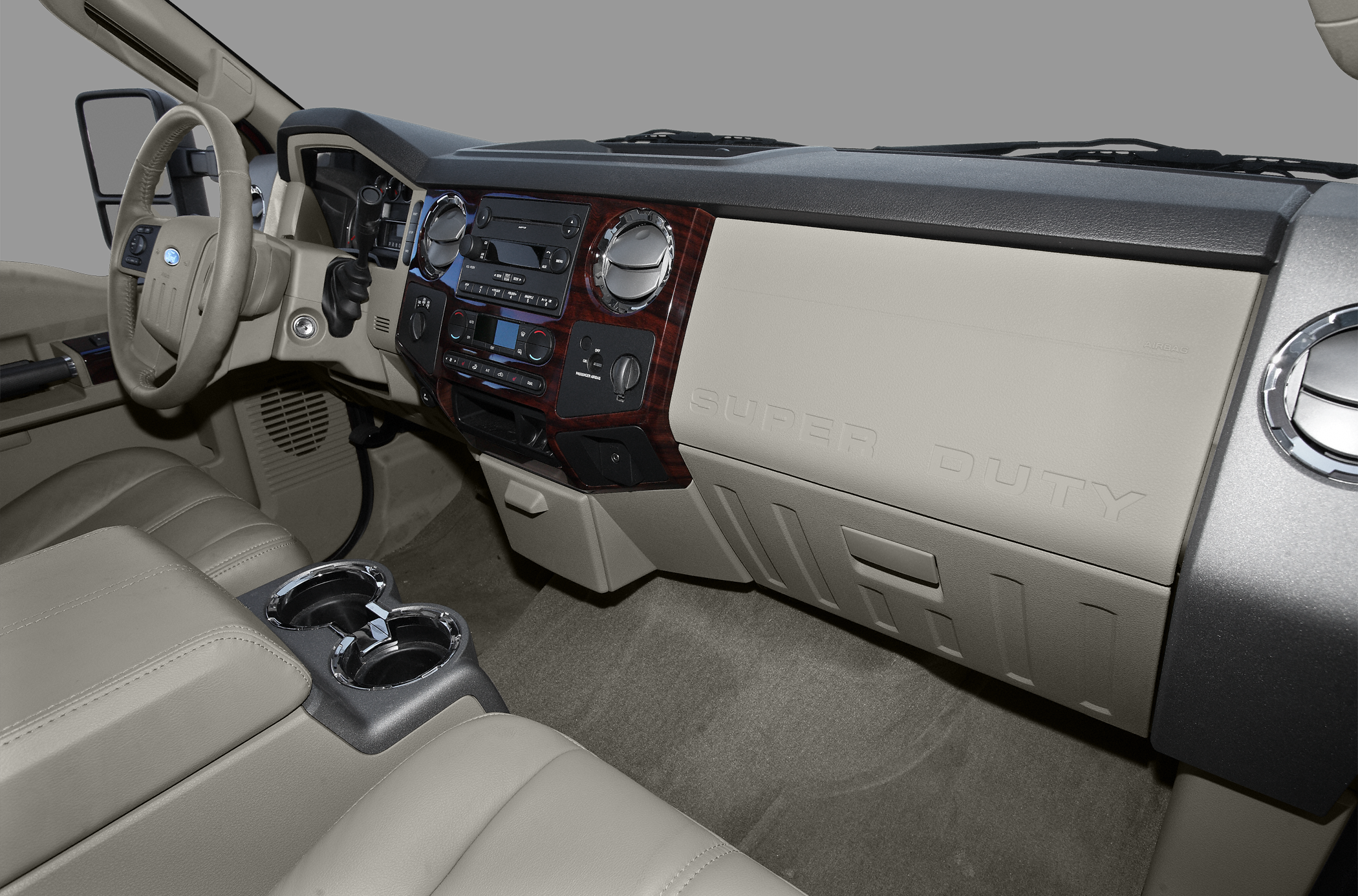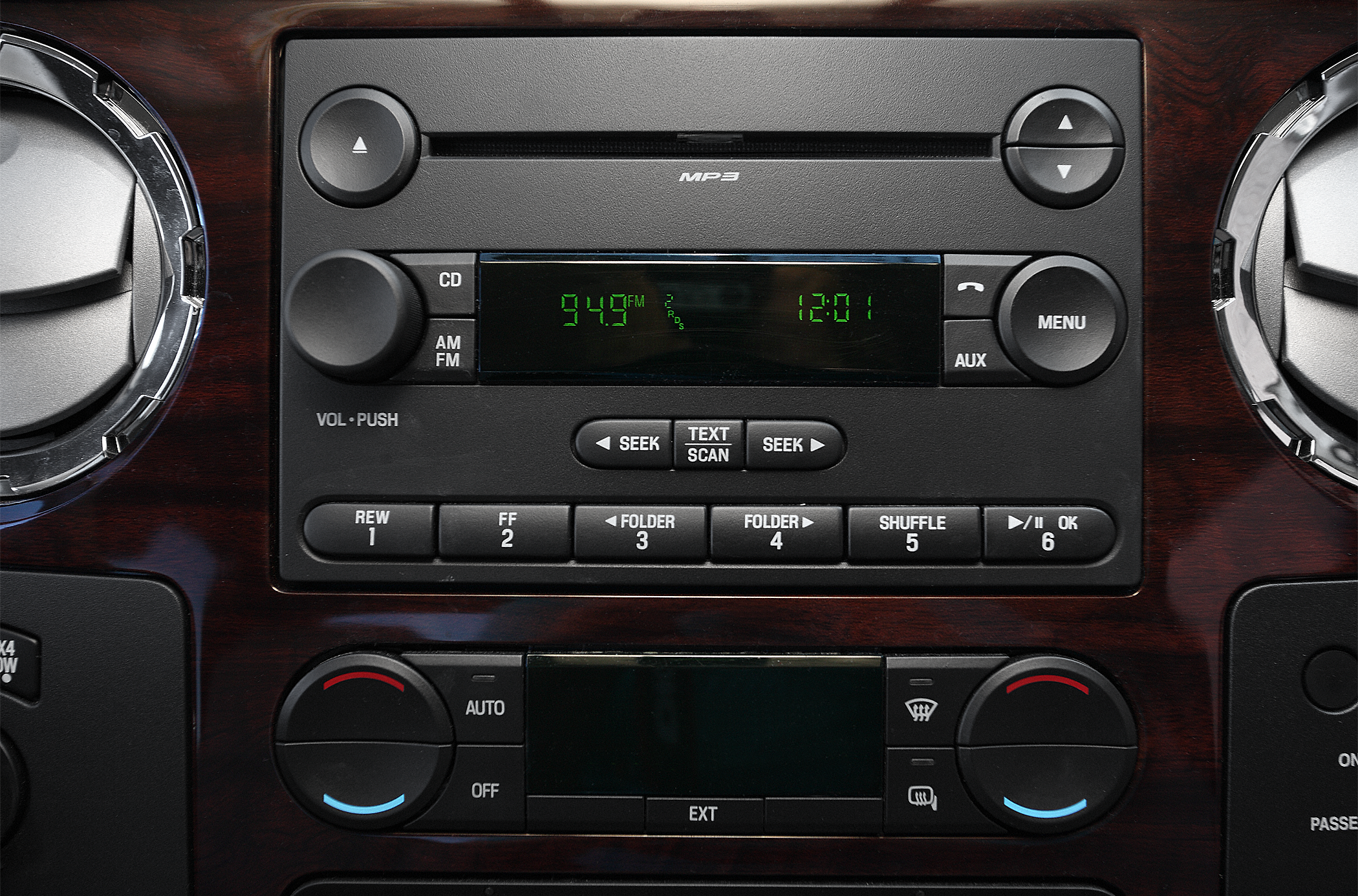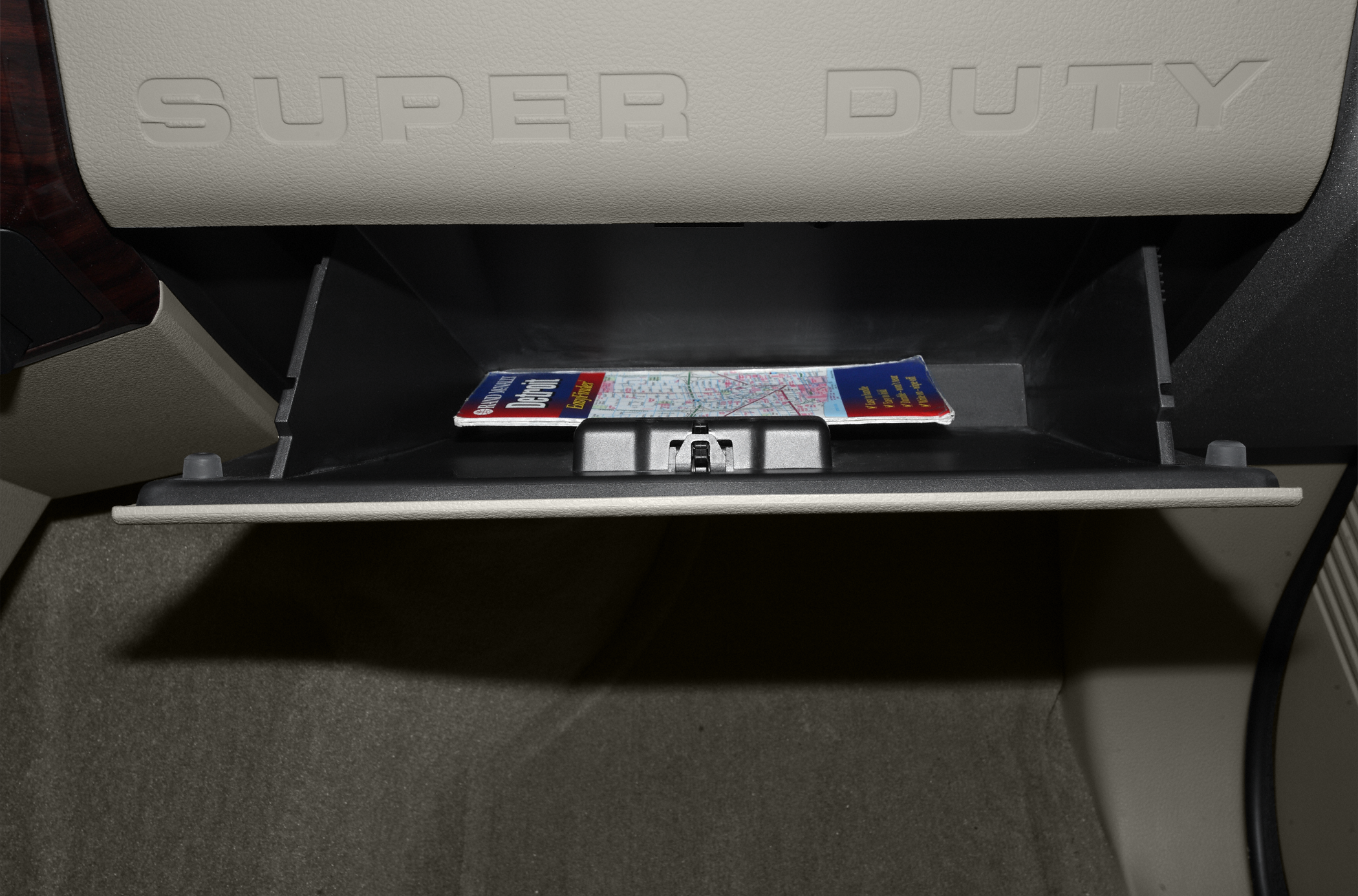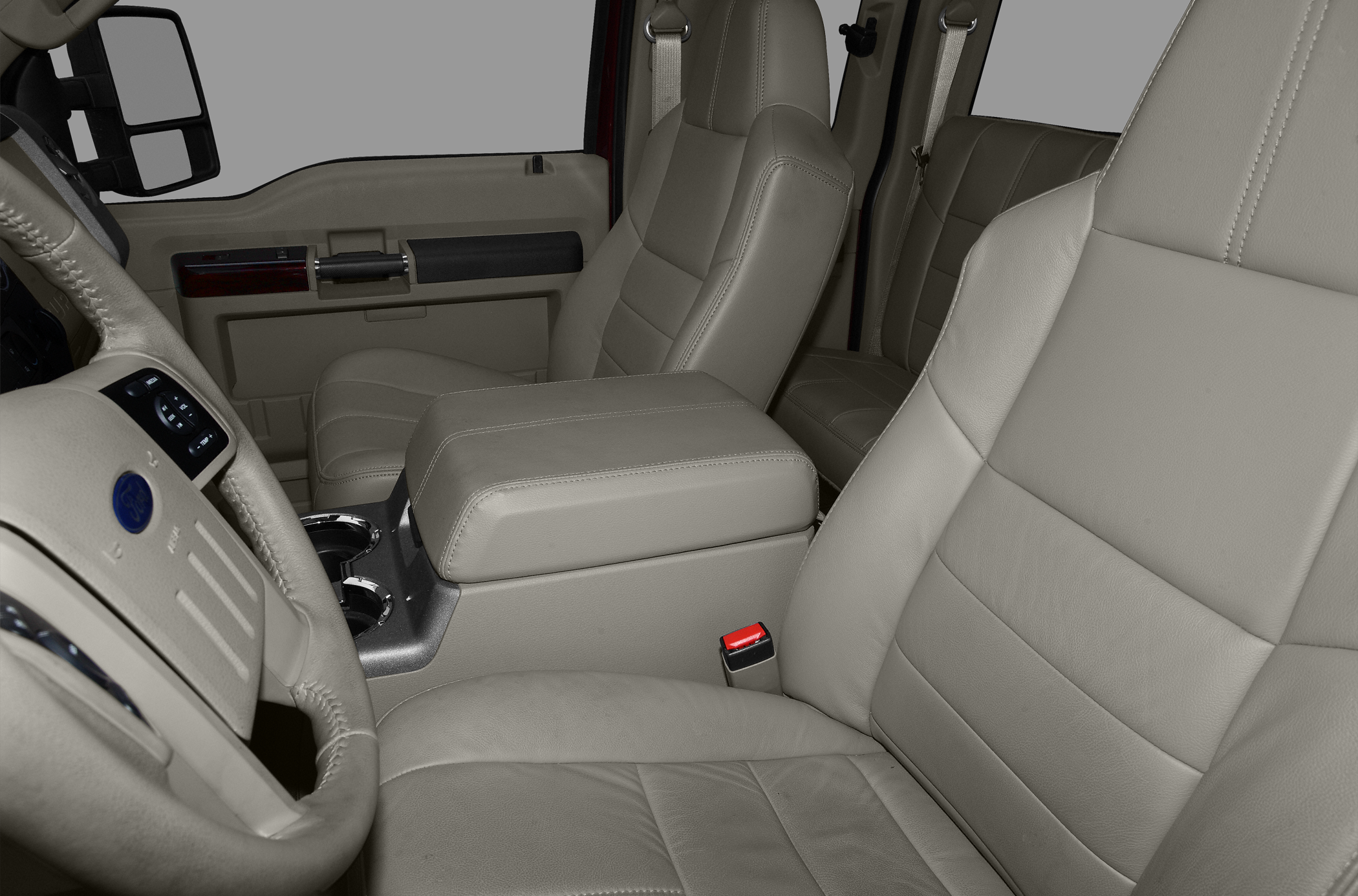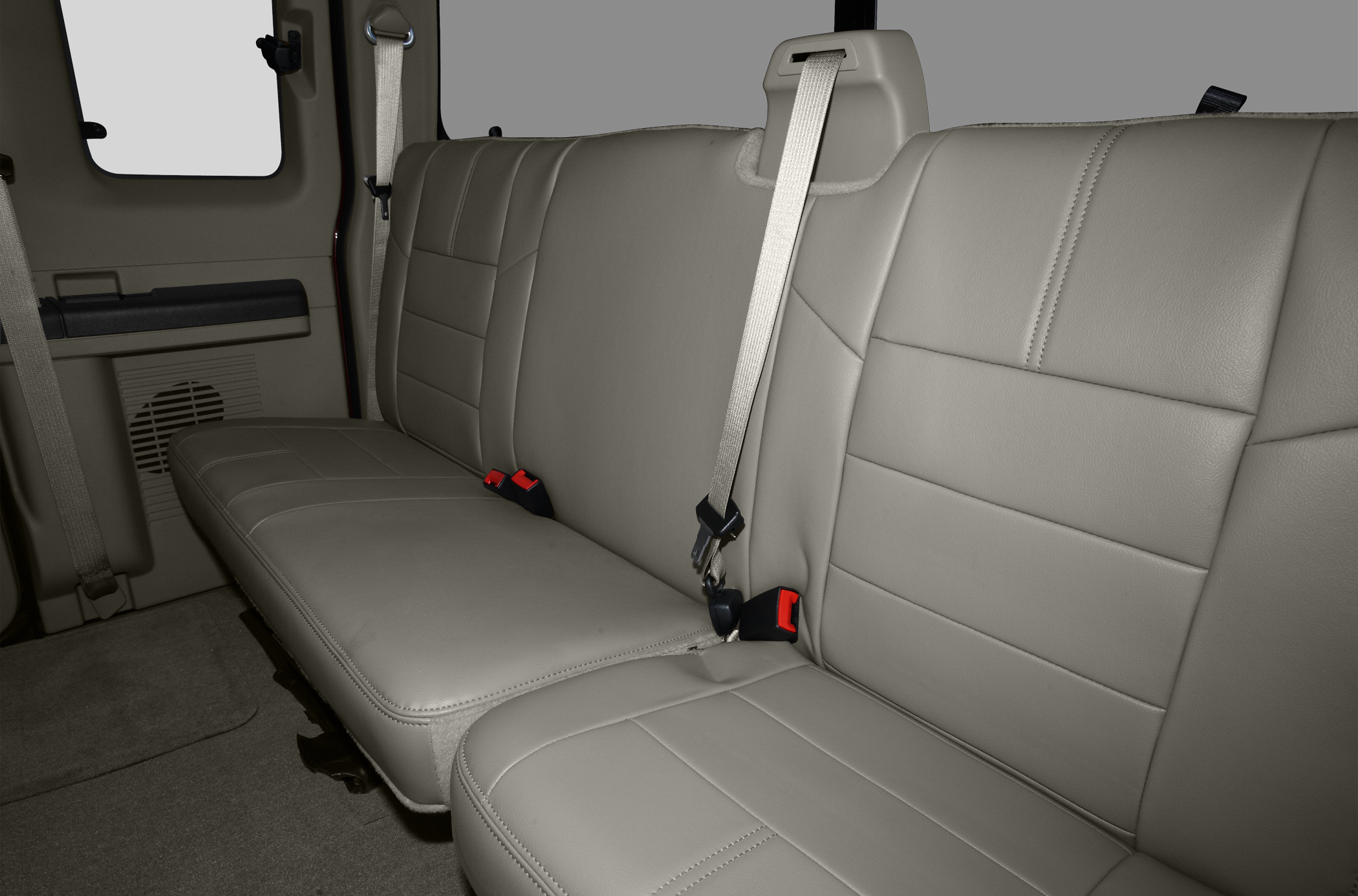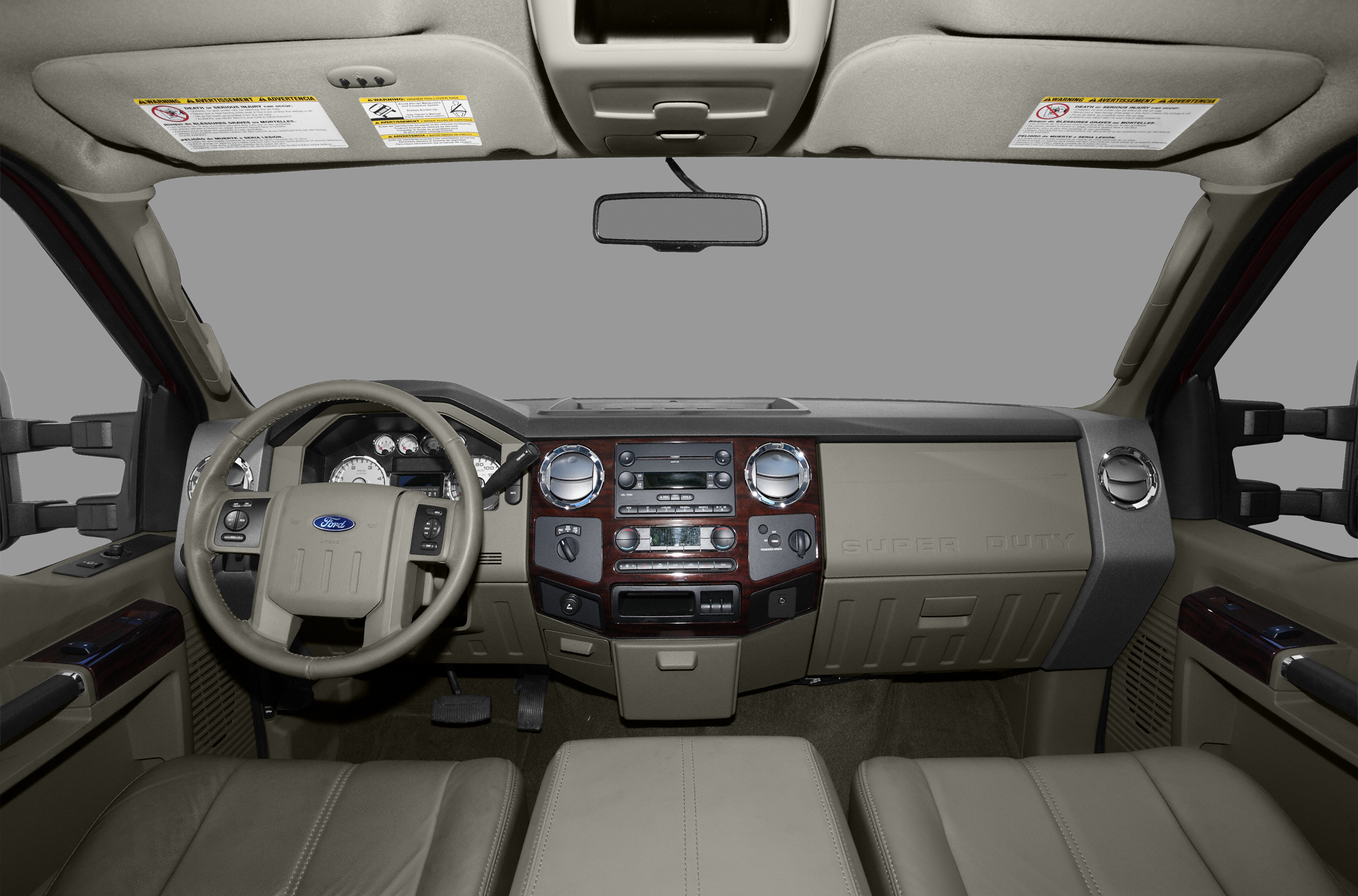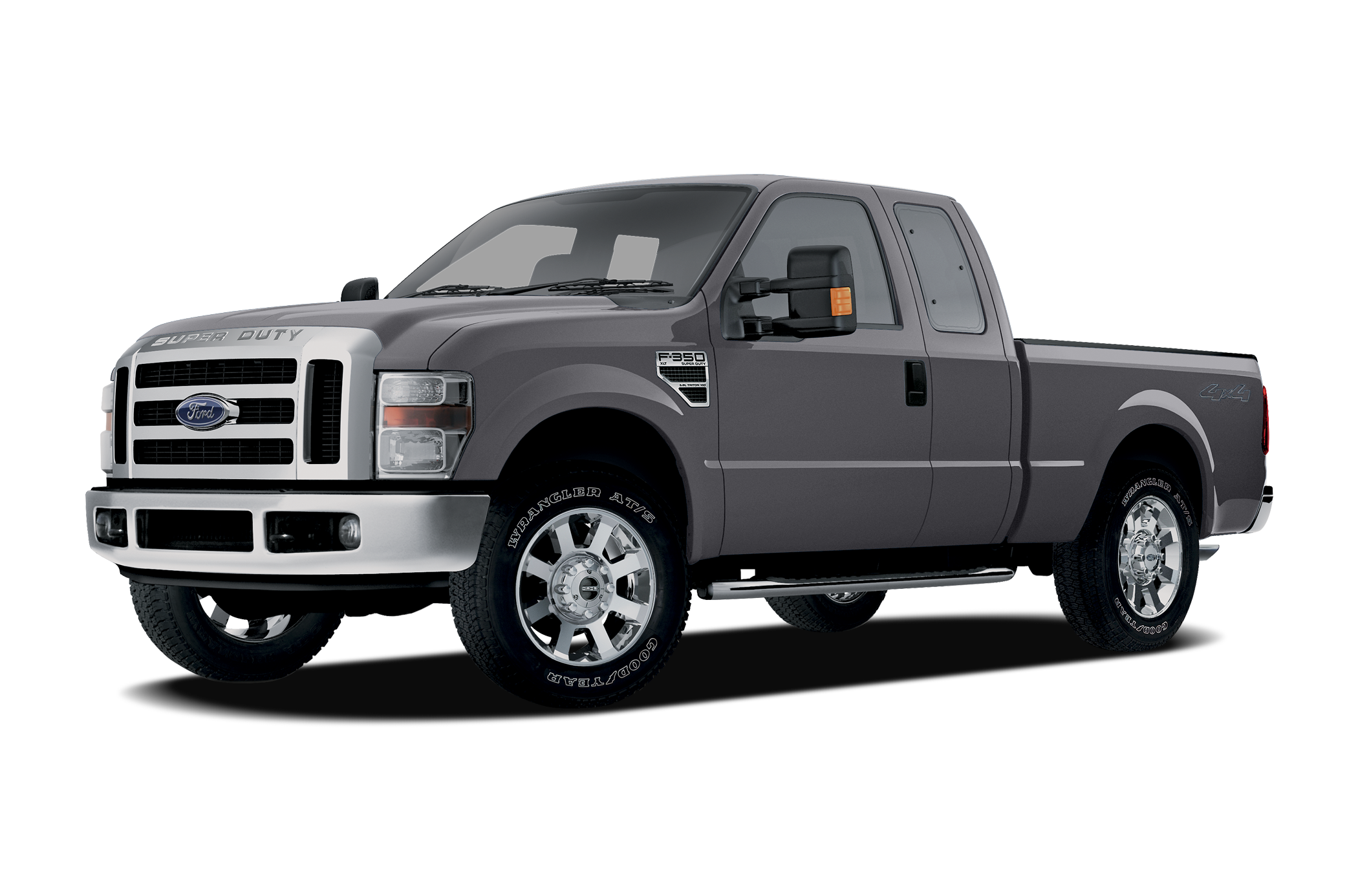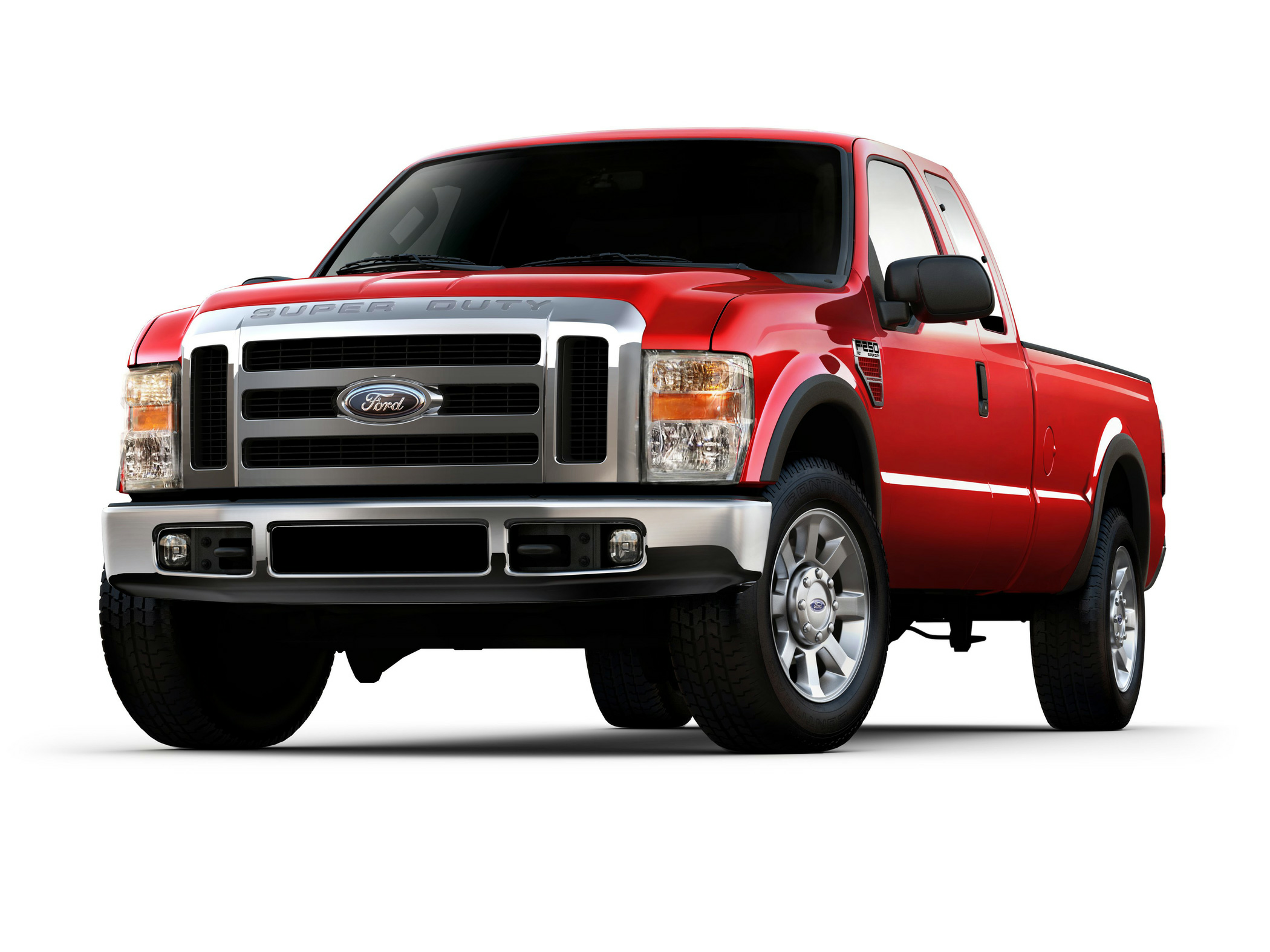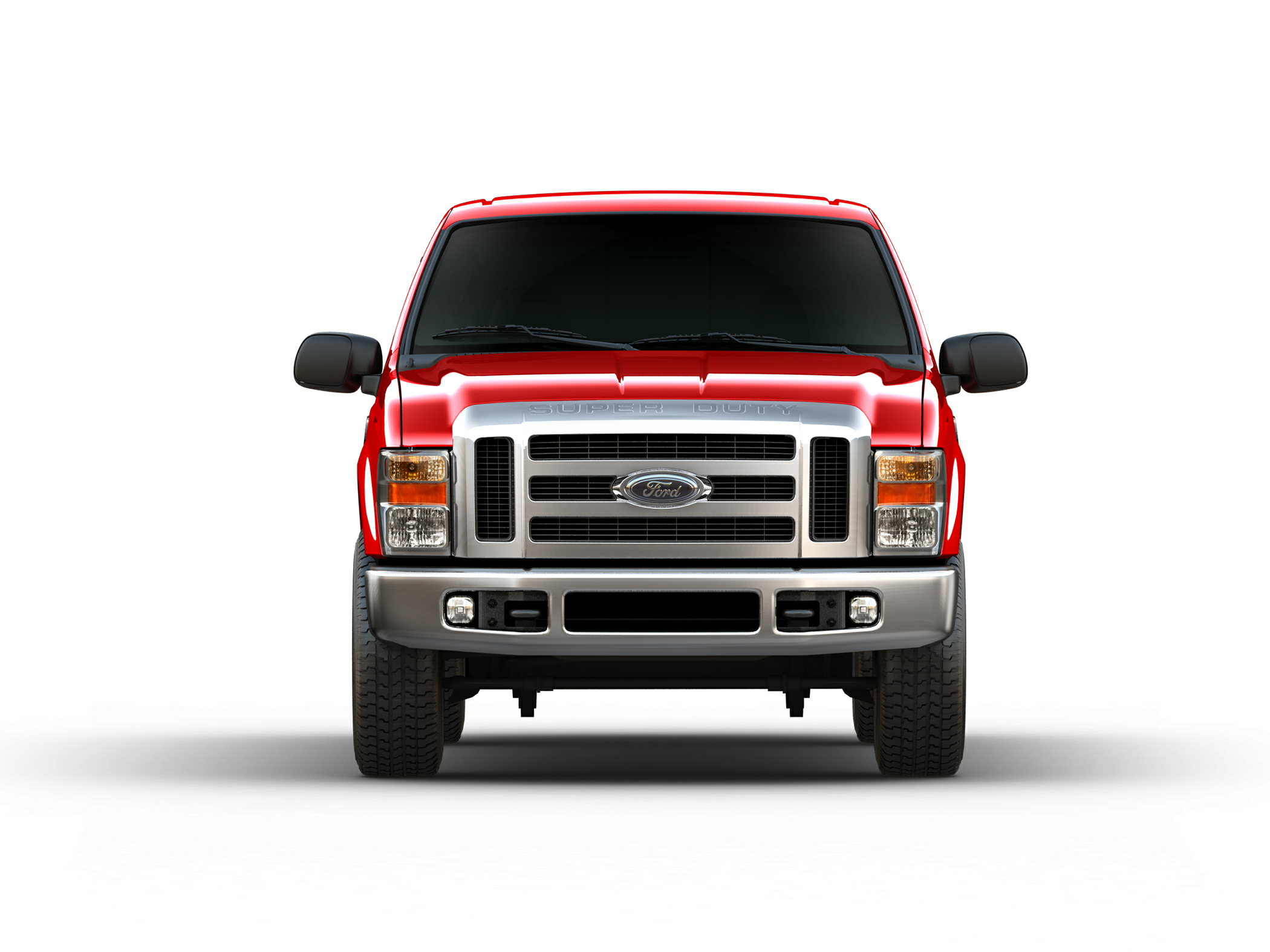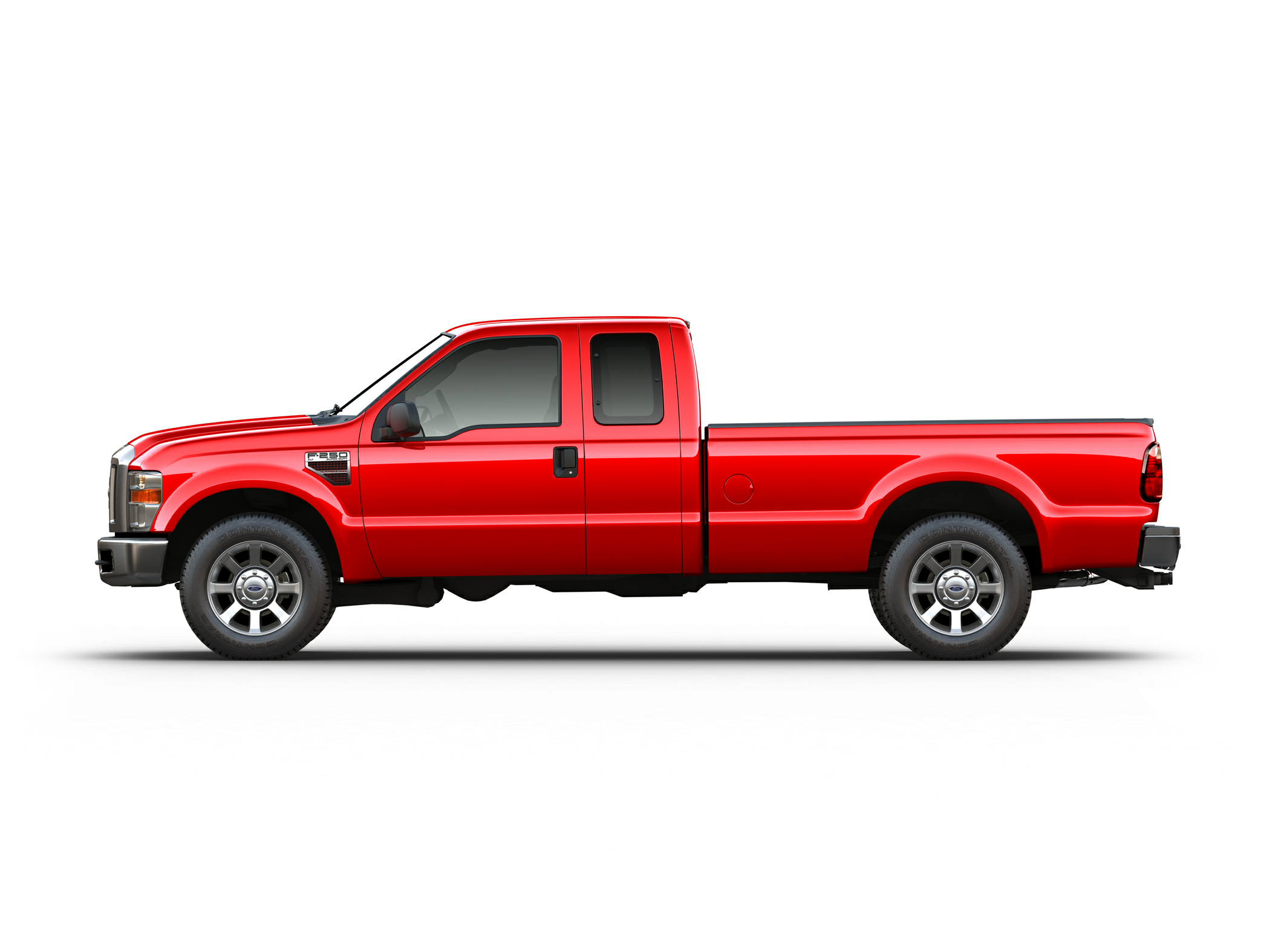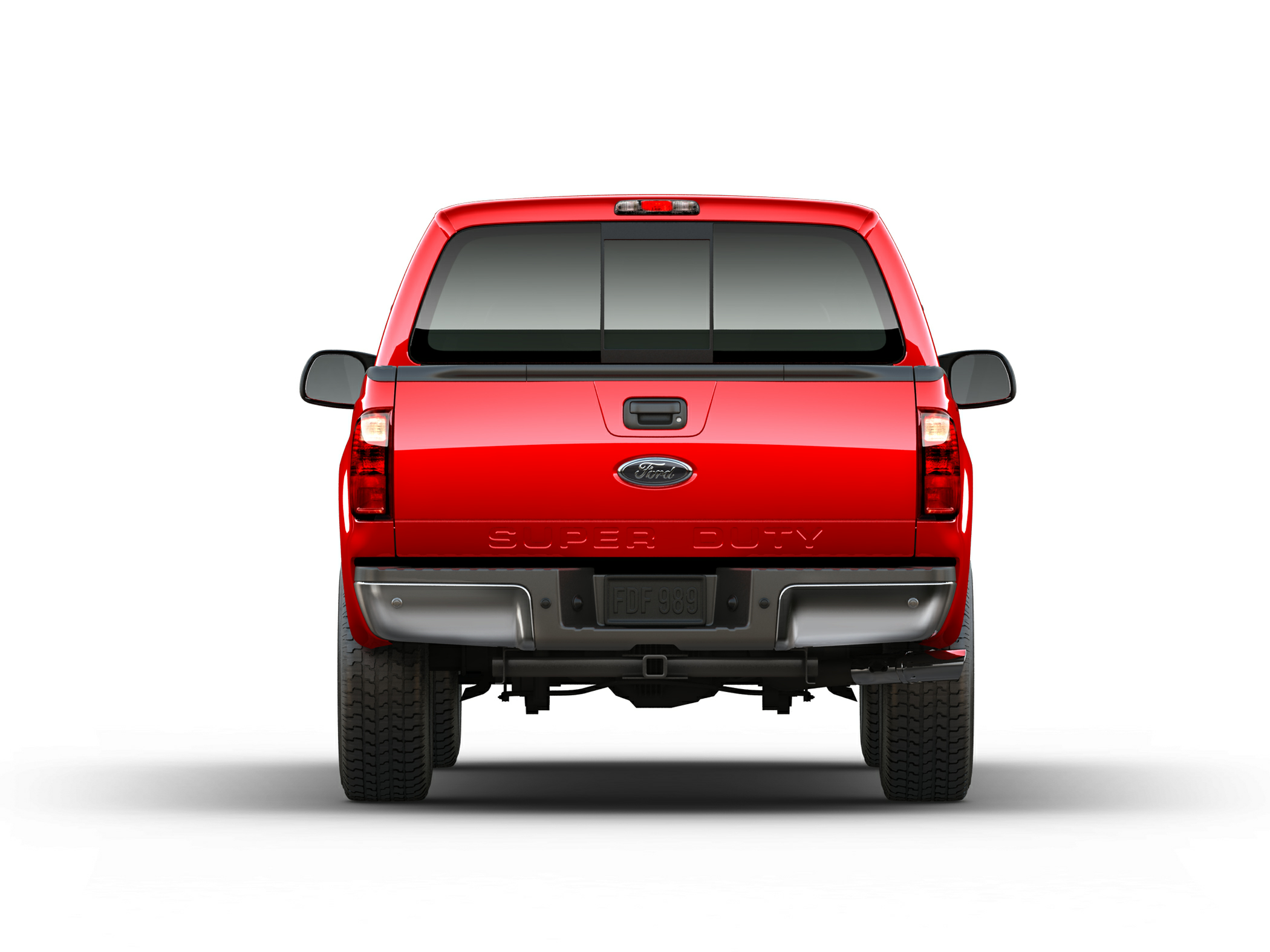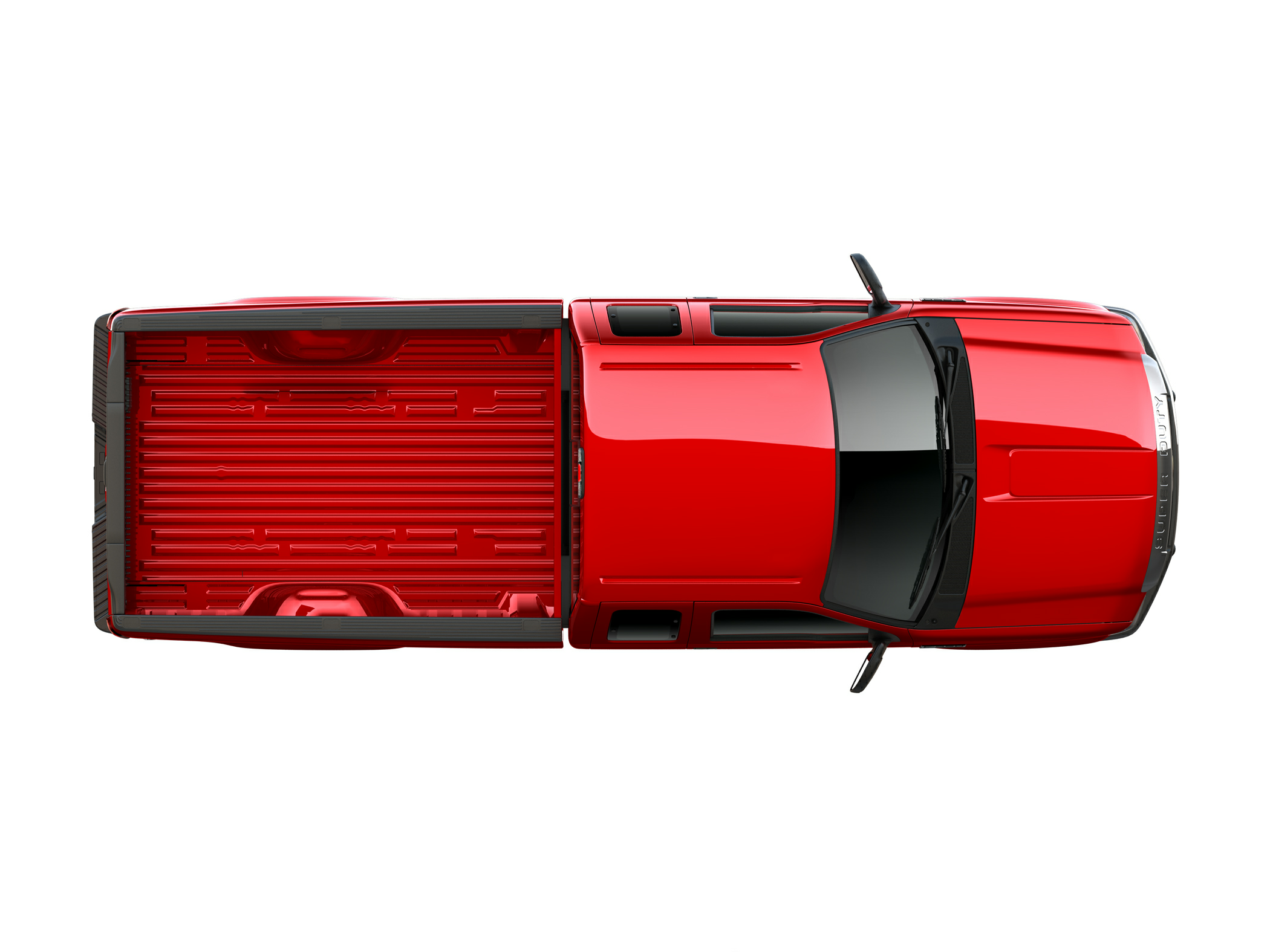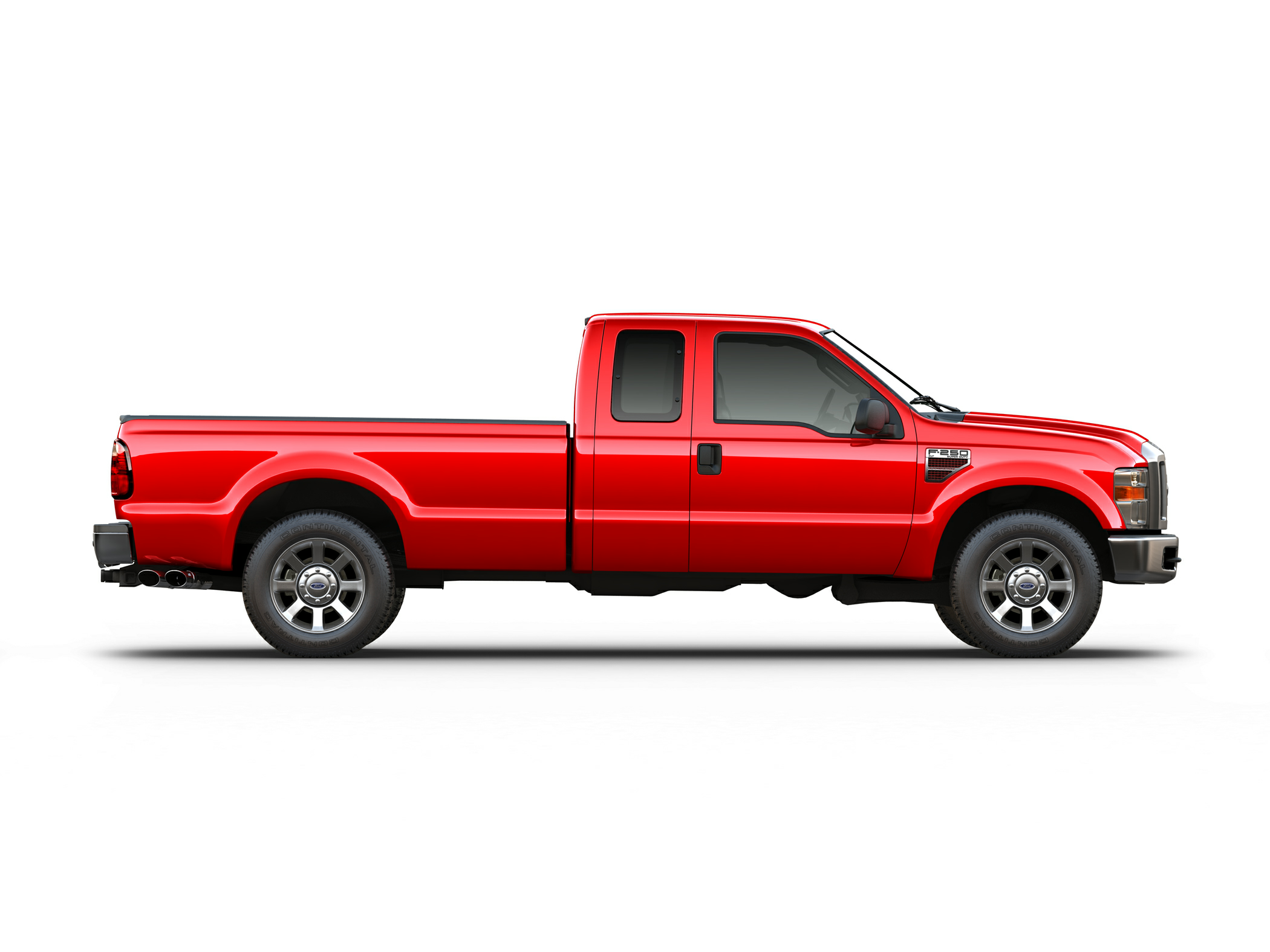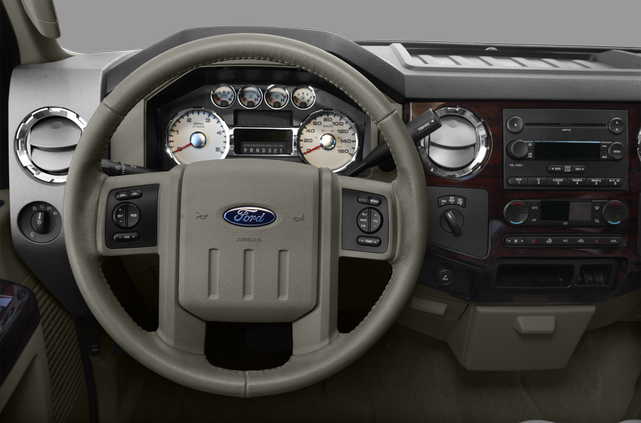Ford introduced its latest, burliest Super Duty pickups in a trial by fire and ice. The ice was in the form of a storm that closed south Texas highways and airports, and the fire was courtesy of the shotguns the Blue Oval boys provided for journalists to mercilessly slaughter clay pigeons. Shotguns not only smoke impressively in cold weather, but the warm barrel works as a hand warmer!
Full credit to Ford for having the guts to order up an ice storm for truck testing. Full-size pickup truck manufacturers will go to no end in search of new gimmicks designed to reinforce the impression of tough capability for their trucks. Pull locomotives? Done. Dropped from the sky? Done. Churn through mud in slow-mo? Done.
But Ford pioneered new frontiers of effort by arranging for journalists to sample the first of its burly new Super Duty pickups during a raging ice storm. That’s tough! Obviously, Ford had already used its weather control technology to verify the trucks were up to the challenge, because they performed perfectly in the slick conditions, both on- and off-road.
Recognizing the seemingly insatiable demand by truck buyers for ever tougher, more capable trucks, in 1998 Ford remade its heavy-duty line with the introduction of the Super Duty trucks. These are built on their own, stronger, chassis rather than using the same foundation as the high-volume F-150 half-ton pickups. The company now sells 380,000 of its work-ready heavy-duties each year and sales are growing because of increased use of the trucks by “personal use” drivers who might tow boats or horse trailers.
Now Ford has expanded the beachhead it established in the niche between light-duty pickups and medium-duty commercial trucks with stronger-than-ever F-250 and F-350 pickups. But Ford’s ace in the hole is a new F-450 pickup, a model never previously available, with a gigantic 24,000 lb. towing capacity. The company predicts it will sell 10,000 of these uber-pickups each year. The F-550 continues to be available only as a chassis cab.
The Super Duty receives an all new 350-horsepower, 650 lb.-ft., 6.4-liter PowerStroke diesel V8 and carries over the 362 horsepower, 457 lb.-ft., 6.8-liter Triton gas V10. The diesel is the focus of attention, and the company promises that the new PowerStroke, with a common-rail injection system and piezoelectric injectors, leaves behind all the headaches of the old PowerStroke’s injection system.
In addition to more payload and towing capacity, and more powerful engines, the new Super Duties also provide that key “Built Ford Tough” macho feature: more comfort amenities. The new trucks are better-riding, the seats are wrapped in rich Chaparral leather, and there is a nifty fold-out step built into the tailgate that makes it easier to climb into the bed.
Drivetrain
Because three-quarters of all Super Duty trucks are diesel-powered, the new oil-burner is the more interesting of the engines. There is also considerable interest because of the durability problems with the outgoing 6.0-liter PowerStroke engine. Those problems were attributable to the fuel injection system’s need for calibration that was tolerant of various levels of fuel quality, according to chief engineer Pete Reyes. By the 2007 model year, reliability scores for the 6.0 PowerStroke topped those of the tried-and-true 7.3-liter, he said.
Ford says the 6.4-liter PowerStroke is all-new, and that is mostly true. The engine is based on the same basic architecture as the 6.0-liter engine, but the parts are upgraded. Only the crankshaft is carried over from the old engine, with everything else replaced.
The significant change is the replacement of the old hydraulic fuel injection system with a modern common rail system featuring piezoelectric injectors. This high-tech system is key to the new PowerStroke’s ability to meet the tough gas engine-equivalent emissions rules.
The other critical part of the new induction system is the sequential turbocharger assembly. The combination of a quick-reacting variable-geometry small turbo with a high-volume large unit gives the PowerStroke the quick reflexes and maximum power that customers demand. Ford says that tests indicate the new engine powers the Super Duty to 60 MPH a second faster than the old 6.0-liter did. The injection system also contributes to a promised cold start capability down to minus 20 degrees F.
The large catalyst and particulate trap permit the truck to earn the clean bill of health from the EPA, but they do cost a bit of power because of the increased back pressure. Further, the system for cleaning the particulate trap involves sending extra fuel through the engine to help burn off the gunk in the trap, and that periodic fuel use puts a small dent in the truck’s fuel efficiency.
The engineering team balanced emissions, power and efficiency, but because of the new government regulations for diesel emissions, that factor had to take priority. Ford insists that unlike the 6.0-liter’s trouble-plagued launch, the new 6.4-engine is thoroughly tested, with more than ten million equivalent miles of testing in both trucks and on engine dynos.
Drivers who have no truck with diesels can still choose the 6.8-liter Triton V10 gas engine. Transmission choices are a six-speed manual or a five-speed automatic. I drove only the automatic, which is well-calibrated, with smooth shifts in casual around-town driving, while also delivering smart gearchanges in harness. Climbing hills, pulling trailers and hauling a load, the transmission makes good decisions about downshifts, when to hold a gear for a while, and when to upshift.
While Ford doesn’t have a name-brand transmission like GM’s Allison gearbox, the company has experienced good reliability with its much less-expensive in-house transmission, Reyes said.
Chassis
The F-250/350 Super Duty frames are made using thick 6.7 mm steel outer rails, and the F-450/550 gets 8.1 mm steel. The cross members are both welded and riveted, a belts-and-suspenders approach that Ford says tops the either/or approach of competitors.
The front section of the frame is fully-boxed, for maximum strength, which is critical for customers such as landscapers, who may mount a snow plow on the trucks, said Reyes. The entire frame is e-coated for corrosion resistance.
A significant detail of the frame’s construction is that the very front frame horn section drops down seven inches to mount the bumper. This puts the Super Duty’s front bumper in better line with the protection systems in passenger cars, so that in the event of a collision the occupants of the car are less likely to be injured. High bumpers and stiffer frames can worsen the effects of collisions between different-sized vehicles, so the front frame horn not only lowers the bumper nearer to car height, but it is also constructed of dimpled steel that will crush in accordian-style in a crash to reduce the force of the blow.
With this virtual bridge truss as the foundation, Ford installs suspension appropriate to the expected work load. Two-wheel-drive F-250s and 350s rely on the ol’ Twin I-Beam swing axle suspension used by Ford since the Iron Age. In this iteration stiffer bushings and revises attachment links on the anti-sway bars improve ride and handling, and a steering damper reduces vibration. The front portion of the Gross Vehicle Weight is boosted from 4,800 lbs. to 5,250 lbs.
The four-bys get a moonbeam solid front suspension using coil springs and radius arms designed to minimize axle wind-up under acceleration. The design enables a reduced turning circle of 46.1 ft. for the regular cab, long-bed pickups. The two-wheel-drive trucks U-turn in 47.7 ft.
The F-450/550 rides on a solid front axle, either two- or four-wheel-drive, mounted with twin-coil suspension. The solid axle not only provides durability, but its wider track lets the front wheels turn at sharper angles for a reduced turning circle size of only 42.3 ft. for the regular cab. The big crew cab long bed F-450 pickup turns around in 51.5 ft.
The rear suspension is the business end of any pickup truck, so Ford put some extra effort into this area. The seemingly contradictory requirements of both higher payloads and increased personal use — which means customer demand for better unladen ride — posed an obstacle, but vehicle dynamics supervisor Dan Gompper’s Super Duty team scaled it like a Super Duty 4 x 4 conquering the slimy mud of a south Texas construction site in an ice storm. That means they met the seemingly impossible task with poise and determination that prevailed impressively.
Leaf-sprung solid axles have known pros and cons. They are strong and have excellent load-carrying capability, but are given to rough ride and axle-hop under hard acceleration. The solution was longer leaf springs. The new trucks’ leaves stretch eight inches more to mount farther forward on the frame. These longer springs have fewer leaves, contributing to a smoother ride. Stiffer bushings meanwhile contribute better roll control in cornering and the staggered shock mounts provide an improved ratio for the shocks’ damper action.
This rear suspension was also designed to keep the rear of the trucks low to better tow fifth-wheel and gooseneck trailers.
F-450
Towing those trailers is the raison de etre of the F-450 pickup. Its appeal is obvious, leaving us to wonder why Ford didn’t offer a pickup bed on the F-450 chassis cab previously. After all, aftermarket companies sold the trucks with pickup beds, right?
Aftermarket companies don’t have the same durability requirements for their products that Ford Motor Co. has, replies Reyes.
The problem was that previous F-450s used industry-standard straight frame rails 34-inches apart to accept various aftermarket beds. Pickup-type beds won’t survive mounted on narrow frames because of the twisting forces that have greater leverage on the narrow mounts. “The box wouldn’t survive our durability cycle,” Reyes explained. “You couldn’t distribute the loads properly over the box on the narrow frame.”
Ford’s solution was to redesign the F-450’s frame to spread wide aft of the cab, providing a secure platform for the bed. But now the wide frame rails ran too close to the massive commercial-duty axle used on the F-450.
One of the benefits of those axles is the huge brake assembly. But over suspension’s range of travel, the mounting heads on the large brake calipers could contact the frame. “This isn’t a drop-in axle,” he said. “We are pushing the limits on the size of the components you can put in a traditional pickup.”
The solution was to use half-height mounting bolts to shave some space on one side of the problem, and to design some indentations in the frame for extra clearance on the other side.
Neat Features
A pickup truck touch is the use of a mid-mounted fuel tank, leaving space out behind the axle to carry the spare tire. Also at the rear of the truck is an innovative step ladder build into the tail gate that folds out to make it easier to climb into the truck’s bed.
A quick tug on the ladder extends it from an open tailgate, and another motion snaps a grab-handle into its upright position. The ladder looks like the kind of thing that manufacturers have been co-opting from the aftermarket in recent years, but nothing like this existed before.
Ford’s engineers got the idea when a couple of them spotted a removable step installed on a tailgate at the annual SEMA show. Looking at the tailgate, which they knew to be hollow, they started plotting ways to use that space to house a deployable step.
A couple customer clinics found strong interest from truck owners, who even said they liked the step enough to switch from competitor’s trucks to get it, so Ford aggressively pursued the idea. While the step looks a little flimsy, the company says it will hold 1,000 lbs., so do not fear additional stops at Waffle House will render it unusable.
Like the F-450’s bed, more effort went into the step than its appearance might suggest. “It was just a matter of working through bugs, and improving the weight, smoothness, life expectancy,” Reyes said. Additional testing found a grab-handle was a must, and the team went through five different versions of that. The step itself is designed to OSHA specs, so professional users should be satisfied if their employees use the device.
Bed extenders have been around for years, but they have always been intrusive when not in use, so Ford developed the Super Duty’s new collapsing bed extender to fold completely out of the way. “Customers said, ‘Get it out of my way,'” said Reyes. “If you look at it, the problem became one of simple geometry.”
Simple maybe, but Ford is the first to solve this particular problem. Another folding component is the Super Duty’s outside mirrors. The truck has the industry’s first power extending and folding mirrors. This lets drivers easily slide out mirrors on both sides when towing, and not only retract them for regular driving, but even fold them both in for parking in tight spots.
Behind the Wheel
Inside the Super Duty’s cab, occupants are left to wonder if this could possibly be a work truck, considering the abundant leather in the Lariat and King Ranch versions (and in the Harley-Davidson edition in the future). But professional drivers practically live inside their trucks, and personal users tend to employ them on long drives towing trailers to distant locations, making virtually all of the Super Duty’s customers sensitive to the amenities available.
Sirius Satellite Radio, dual-zone climate control, quiet steel laminated dash panel, more insulation and thicker window glass all combine to make the Super Duty’s cabin a comfort palace unrecognizable to those of use whose first trucks had AM radios and no A/C.
For those diesel veterans accustomed to freezing on cold days, the Super Duty offers a welcome innovation in the form of an electric heater. The Rapid-Heat cab heater starts making heat instantly and supplements the diesel’s meager heat output whenever needed.
The TowCommand system looks like another electronic doodad, but it is in fact a miraculous breakthrough in trailer brake technology, as anyone who has used the system since it appeared on the previous generation Super Duty well knows. The device is an electronic trailer brake controller that is built into the truck, so it has the benefit of knowing everything about the vehicle’s systems and the driver’s inputs, so that it can provide the correct amount of braking force to the trailer, rather than having to guess at the correct amount as add-on brake controllers do.
New for the ’08 models is smarter software that lets the trailer brakes work better on slippery surfaces where the truck’s antilock brake system is active, and especially in those tricky situations when one side of the truck is on, say, the dry crown of the road, while the other side is on a wet or icy edge. Forget the tailgate step; TowCommand continues to be a reason to buy a Super Duty over a competitor.
Hammer the brake pedal with the truck pulling a massive 20,000 lb. fifth-wheel camper and it hums uneventfully to a stop in a normal-seeming distance. The truck’s brake pedal is long, as seems to happen with hydraulically boosted brakes on diesel trucks under heavy braking, but keep pressing and it keeps slowing the truck more. There was simply no indication of any activity from the trailer. It didn’t seem to push us onward, it didn’t wiggle, and it certainly didn’t smoke or flat-spot any of its tires. It just stopped.
The F-450’s precise steering is appreciated when pulling such a big trailer, making it easy to keep the rig in the center of the lane with no difficulty. On the open road without the trailer, the F-450 rides better than we have any reason to hope, its longer leaf springs working as advertised to soak up bumps without punishing the occupants. Broken pavement makes itself known, as should be expected, but in regular conditions an empty F-450 dually gives the driver no reason to wish for a payload.
The Super Duty F-450 still falls short of the tow rating of vehicles such as the Chevrolet Kodiak medium-duty truck with a pickup bed conversion performed by a an aftermarket company such as Monroe. The Ford would be easier to live with when unhitched, more comfortable and better-equipped with luxury features and at a lower price too. The massive commercial-duty rear axle and brakes, combined with the smart brake controller make the F-450 an impressive hauler. But if exorbitant towing capacity is the overriding issue, an almost-big rig like the Kodiak is the way to go.
The F-250, which we also drove unladen, has the ride and handling of a half-ton truck. At least that of a half-ton truck before the latest generation of half-tons moved more solidly into car-like ride. Personal use owners won’t regret the days they have to use their truck as a car thanks to the many upgrades to the Super Duty’s frame and suspension, as well as the interior amenities.
Off-road, in more-than-axle-deep slime, even in four-wheel-high, the truck powered through uneventfully. This included impressively deep ruts and some very steep climbs over wet rocks, with no instance when the truck felt out of control, in danger of getting stuck, or had the driver wishing he’d selected the low range in the transfer case.
You will never get stuck, but if you ever need to pull anyone else out, the Super Duty has 27 mm closed tow hooks that will support 33,000 lbs. So you can lift out a couple of the other guys at once.
Maybe the Ford guys can add that test to the fire and ice trial next time around.

